Asian Pantry Essentials

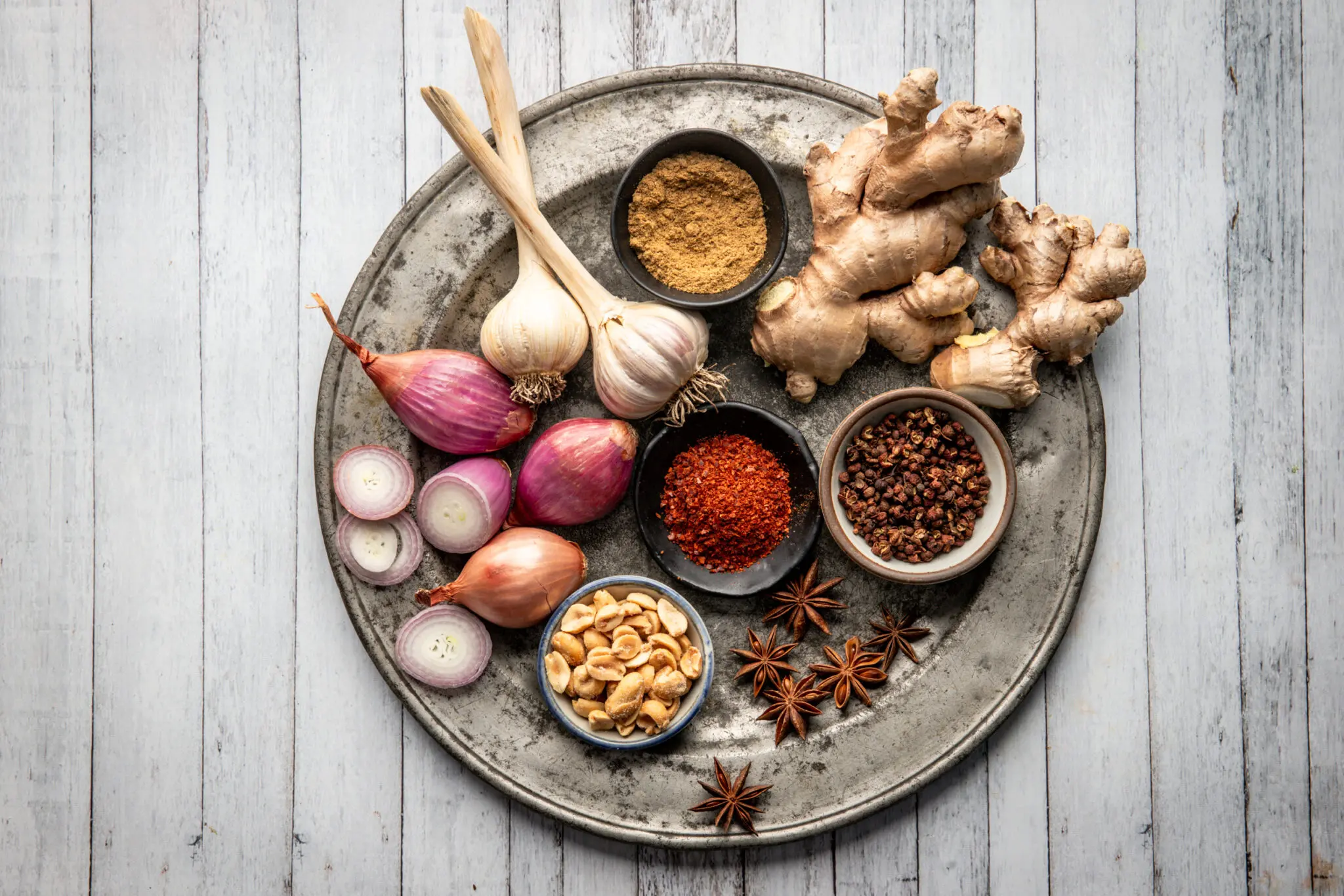
Jump to: Soy Sauces — Rice Wines and Vinegars — Cooking and Seasoning Oils — Spicy Sauces and Pastes — Other Sauces and Pastes — Seaweed — Kimchi — Rice — Noodles — Starches — Aromatics — Spices, Seeds and Powders
One of us is a Jewish New Yorker, and one of us is a British man, but we probably cook using East Asian ingredients, recipes or methods two or three times a week. For us, it’s comfort food that we can cook up using simple, tested techniques, even on a week night.
✶
Over time we’ve curated a decent pantry to pull from, and here we list out our “essentials” — the Asian ingredients we use all the time, over and over. We also list extra ingredients we love, but use a little less often.

Most of these ingredients should be available in any large grocery store, but it’s worth it to look for a specialist Asian market in your neighborhood. The owners can help you find the ingredients you’re after, or suggest substitute brands.
✶
This page focuses primarily on the East Asian cuisines of China, Japan, Korea and Thailand. All the countries we draw inspiration from are culinarily diverse, and our recipes are tailored for our own personal palates. We’d love to hear from you if you have a local ingredient or recipe that you recommend we try. Tell us what’s in your Asian pantry!

Soy Sauces
If there’s one bottle that we reach for more often than any other, it’s soy sauce. There are more variations of this flavoring than we could possibly describe, but here are the ones we use most often. For more discussion of varieties of soy sauce, head to Marion’s Kitchen, or find a much more detailed primer at Eater.
All Purpose Soy
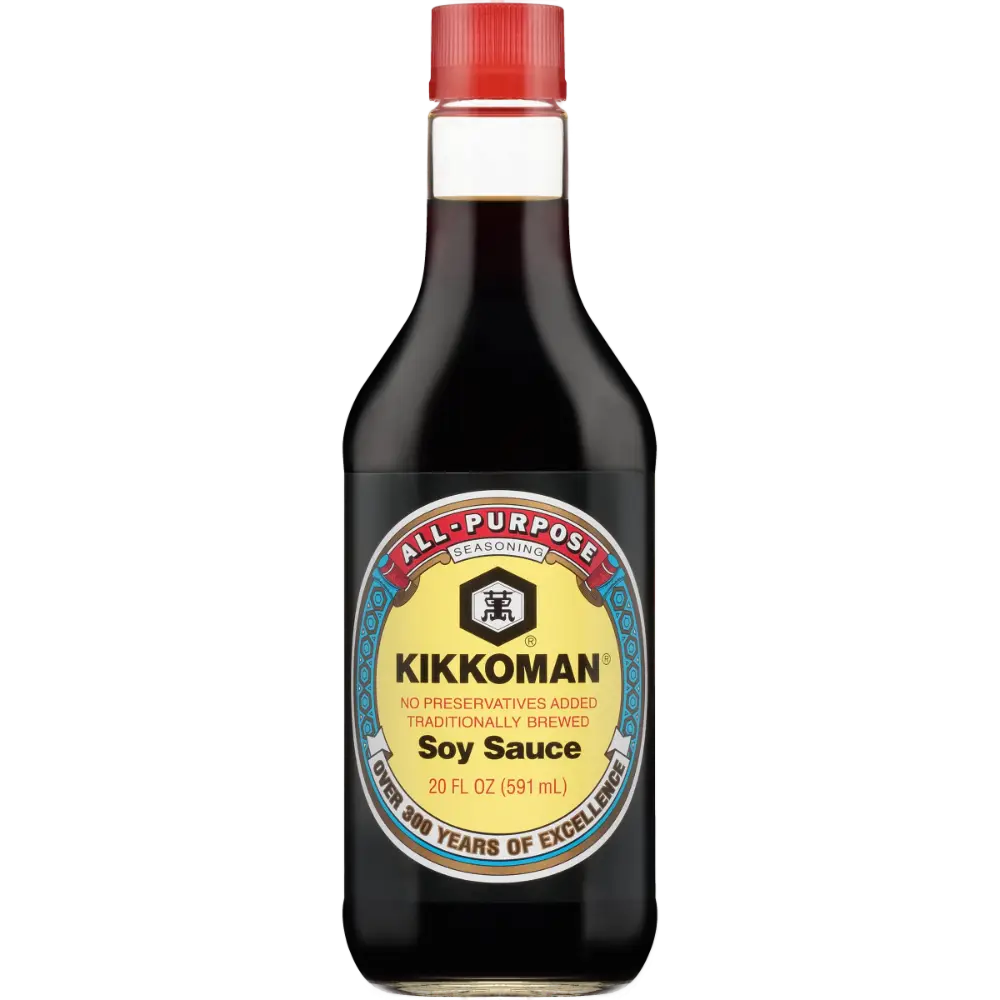
Kikkoman is a great all purpose soy sauce. This Japanese soy is balanced with a good amount of saltiness, just a touch of sweetness, a punch of meaty flavor, and a good color.
Dark Soy
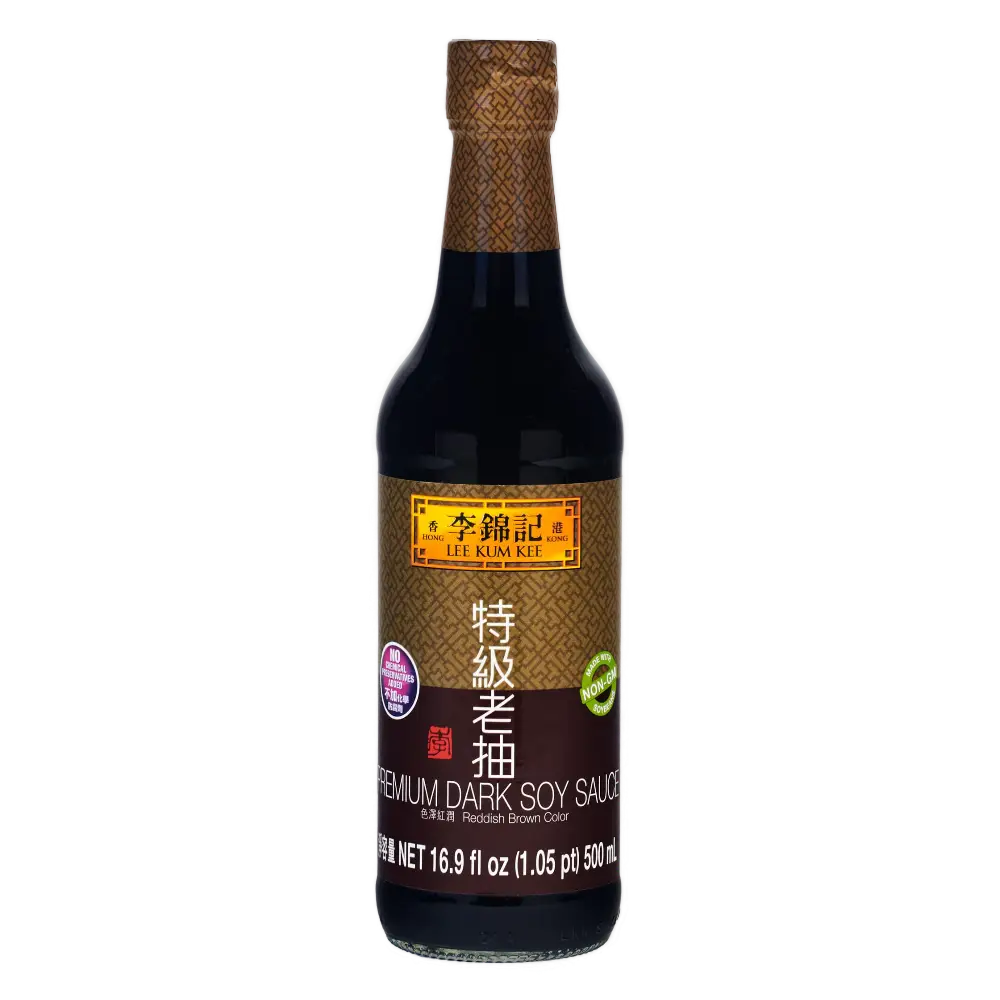
The dark soy varieties are thicker, sweeter, and much darker in color. They are mainly used to add rich color to a dish, more than to add flavor.
Light Soy
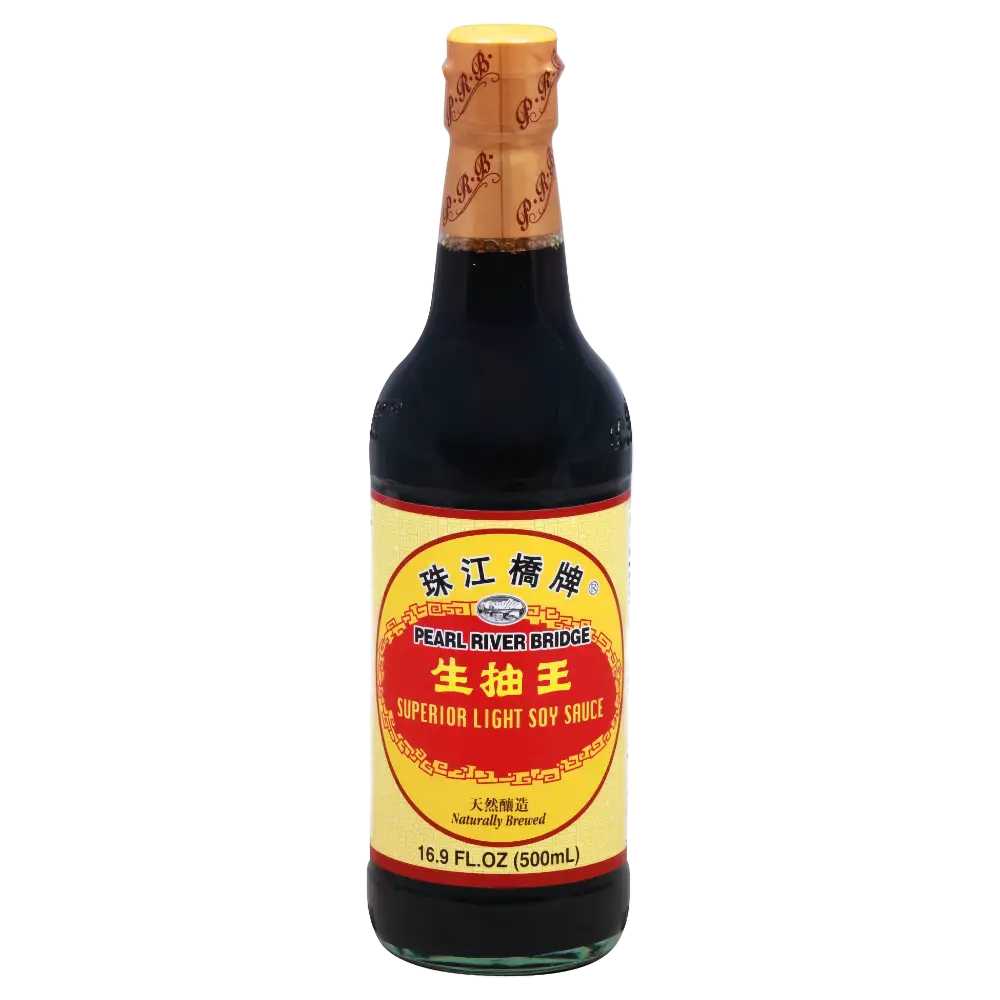
Light soy is lighter in color, thinner, and doesn’t pack quite such a meaty flavor punch, but is much saltier than regular soy.
Don’t confuse it with “low sodium” soy sauce.
Low Sodium Soy
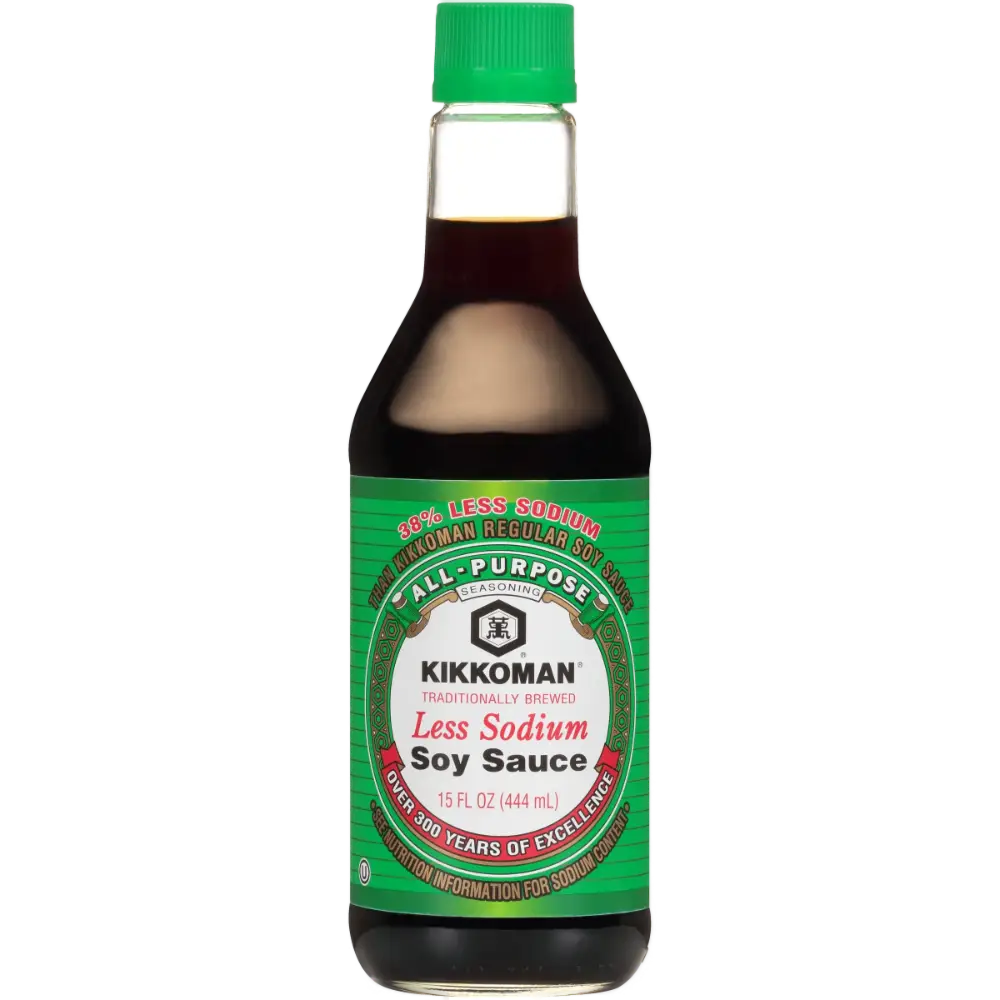
For those of us watching our salt intake, the lower-sodium variety is worth looking out for. It’s certainly not “low sodium” by any means, but it does clock in at around half the salt content of regular soy sauce.
If you use Kikkoman, it’s the soy with the green cap.
TAMARI
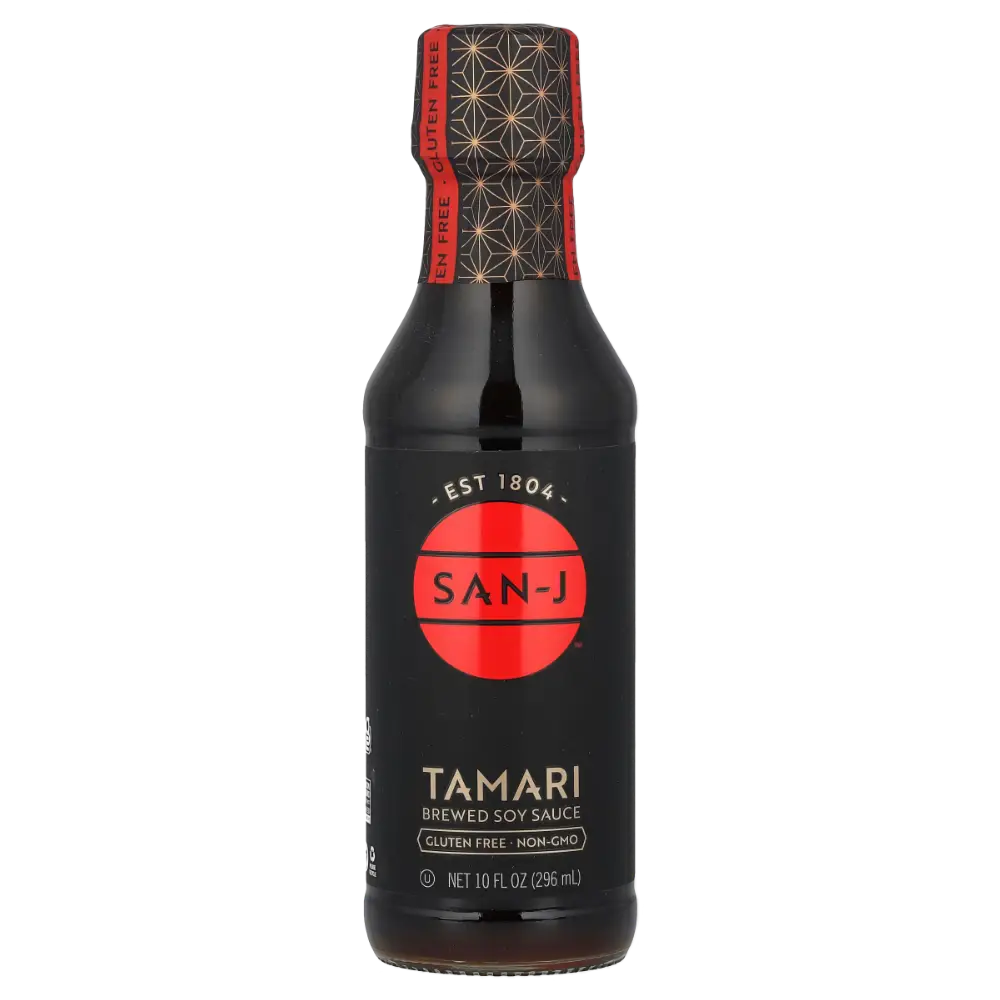
While soybeans naturally contain no gluten, the process that creates soy sauce can add ingredients that do. Gluten-intolerant cooks should look for brands that specify gluten-free.
Tamari, a dark Japanese soy sauce, is is almost always gluten free, though check each brand to make sure.
Sweet Soy

An outlier in this group, you can think of sweet soy as the Asian equivalent of molasses. Often sourced from Indonesia, where it’s known as kecap manis.
Very sweet and thick, with just a little salt. Good for sweet marinades.

Rice Wines AND VINEGARS
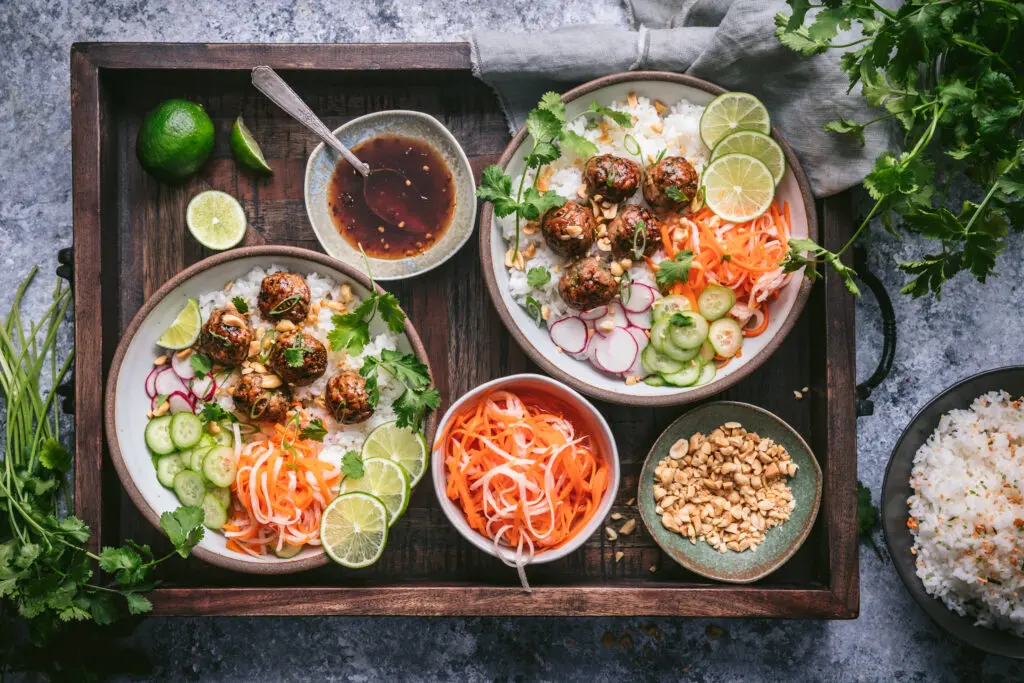
Vinegars aren’t just good for salad dressings, a touch of acid in a savory sauce can brighten up the flavors. And wines add depth, sometimes with acidity, and sometimes with sweetness.
Shaoxing

This Chinese rice wine has similar flavor notes to dry sherry. It’s savory, a little sweet, with a hint of malt and smokiness.
We use it most often in marinades, to tenderize meat, in stir-fries, and braised dishes, like our Braised Short Ribs with Honey, Soy and Orange.
Sake
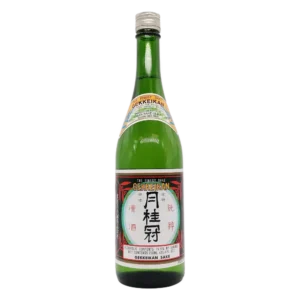
This Japanese rice wine is lighter in color and flavor than Shaoxing. The flavor tends towards fruity and floral.
The “cooking” variety found in grocery stores has added salt, so we prefer to use inexpensive drinking sake. We use sake in our Teriyaki Brown Rice Salad, and devote a whole chapter to it in our book, Cork and Knife
Mirin

Mirin is a sweet rice wine used in many Japanese marinades and sauces. Thicker than rice wine, it adds viscosity and sweetness to any dish. We love it with Chicken Meatballs and Bulgogi.
Rice Wine Vinegar

Rice vinegar, also called rice wine vinegar, is a mild vinegar great for vinaigrettes, quick pickles, dipping sauces, and salad dressing, like in our Red Cabbage Salad with Spicy Miso-Ginger Dressing.
The “seasoned” variety has added sugar and salt, so we like to stick to the unseasoned kind.
Black Vinegar

Also called Chinkiang Vinegar, this Chinese vinegar is very dark, and has a full bodied, malty, complex flavor. It has mild to medium acidity, with a faintly sweet flavor reminiscent of Balsamic.
We use it our Crispy Shrimp Toast with Sweet and Spicy Dipping Sauce
Palm Vinegar
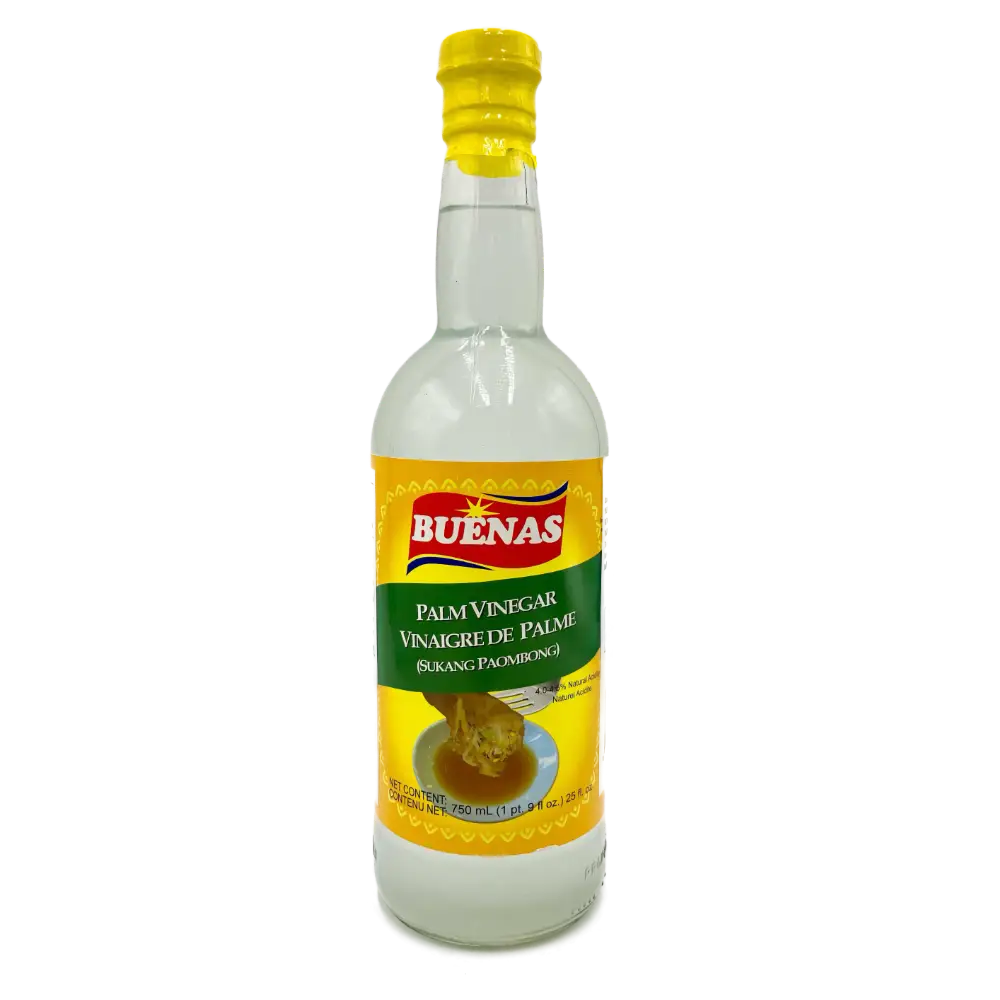
Palm vinegar, made from the fermented sap from flower clusters of the nipa palm is used most often in the Philippines. It’s a traditional ingredient in Adobo (our version us in our Ultimate Dutch Oven cookbook).
We don’t use this all the time, but it’s nice to have when we’re making Filipino dishes.

other Sauces and pastes

If we had space in our pantry, this list would be several pages long. There are dozens of fantastic, flavor-packed sauces and pastes available in Asian markets. These are the ones we use the most.
Hoisin Sauce
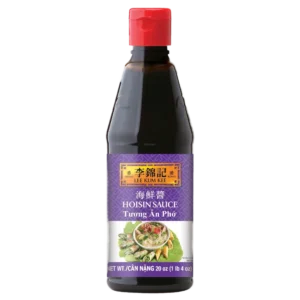
Hoisin is a sweet and savory sauce. Think of it as Asian barbecue sauce, it’s a great glaze for meat, an addition to stir fries, or as dipping sauce. Hoisin usually includes soy, red chillies and garlic. We feature it in our Hoisin-Glazed Cocktail Meatballs.
Fish Sauce
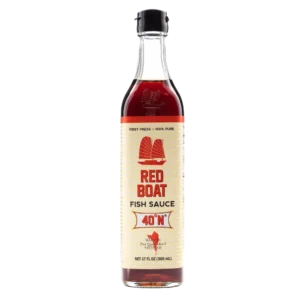
This funky, salty sauce is essential in East and Southeast Asian cuisine, but is a great way to add depth to many different kinds of dishes. When choosing a fish sauce, look for one that has only 2 ingredients, anchovies and sea salt. Our favorite these days is Red Boat, which we use in our Vietnamese Grilled Pork Chops (Thit Heo Nuong Xa) with Rice Noodles.
Oyster Sauce
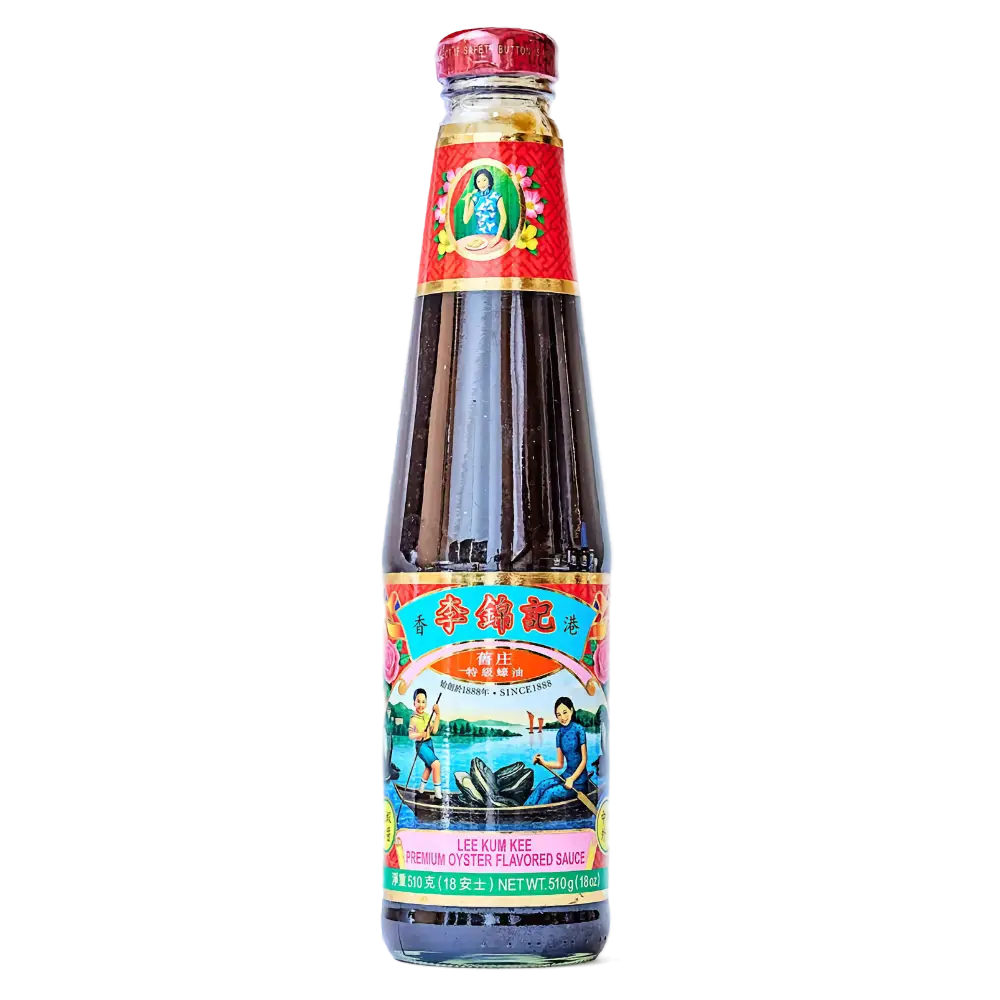
Despite its name, oyster sauce doesn’t taste fishy at all, and adds a rich salty and sweet flavor. It’s great in stir fries and fried rice.
It’s a key component in our Stir Fried Lo Mein Noodles with Pork and Vegetables
Tonkatsu
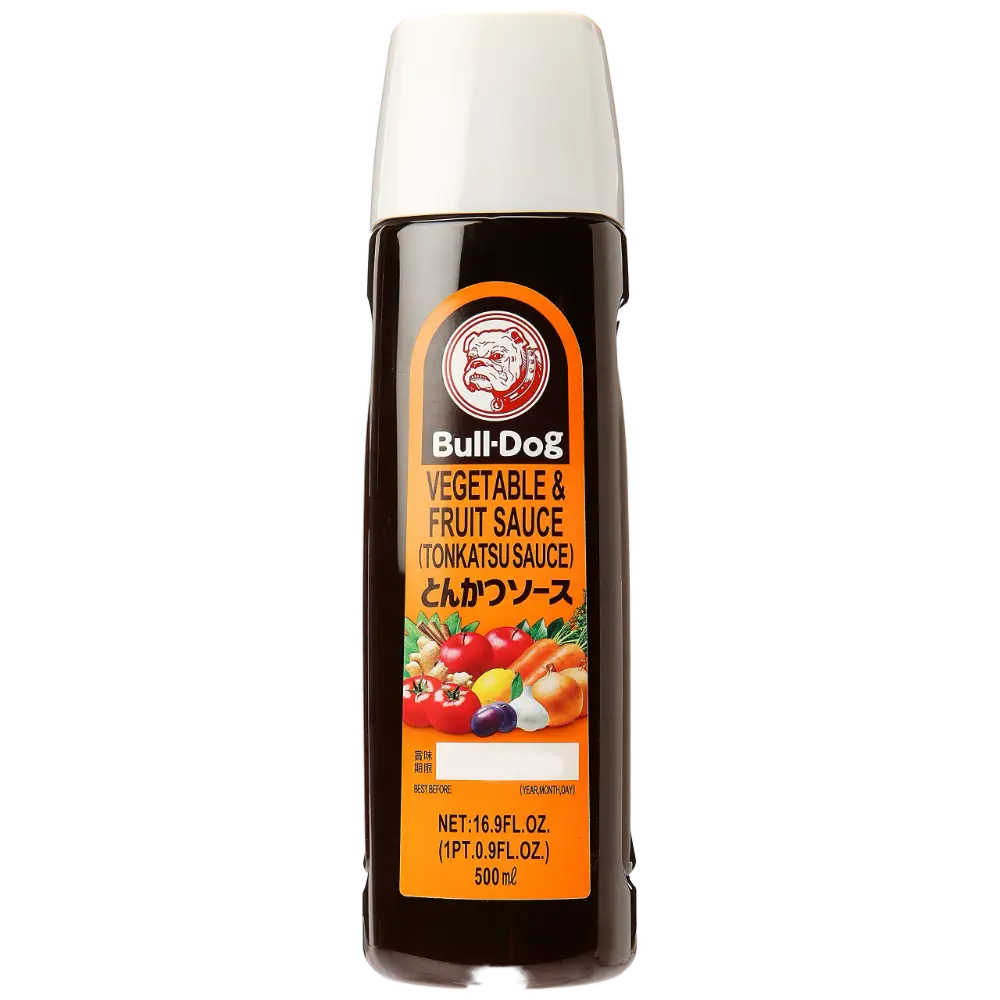
A Japanese sauce, similar to a thick Worcestershire sauce. It’s traditionally served with tonkatsu, a crispy fried pork cutlet.
We use it constantly, almost like ketchup, and our favorite brand is Bull Dog.
Sweet Chili
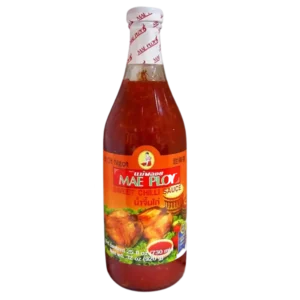
Known as nam chim kai in Thailand, this sauce is perfect for dipping spring rolls or any crispy treat. More sweet than spicy, our favorite brand is Mae Ploy.
We use it in our Mini Thai Shrimp Cakes with Sweet Chili Dipping Sauce
Japanese Mayo
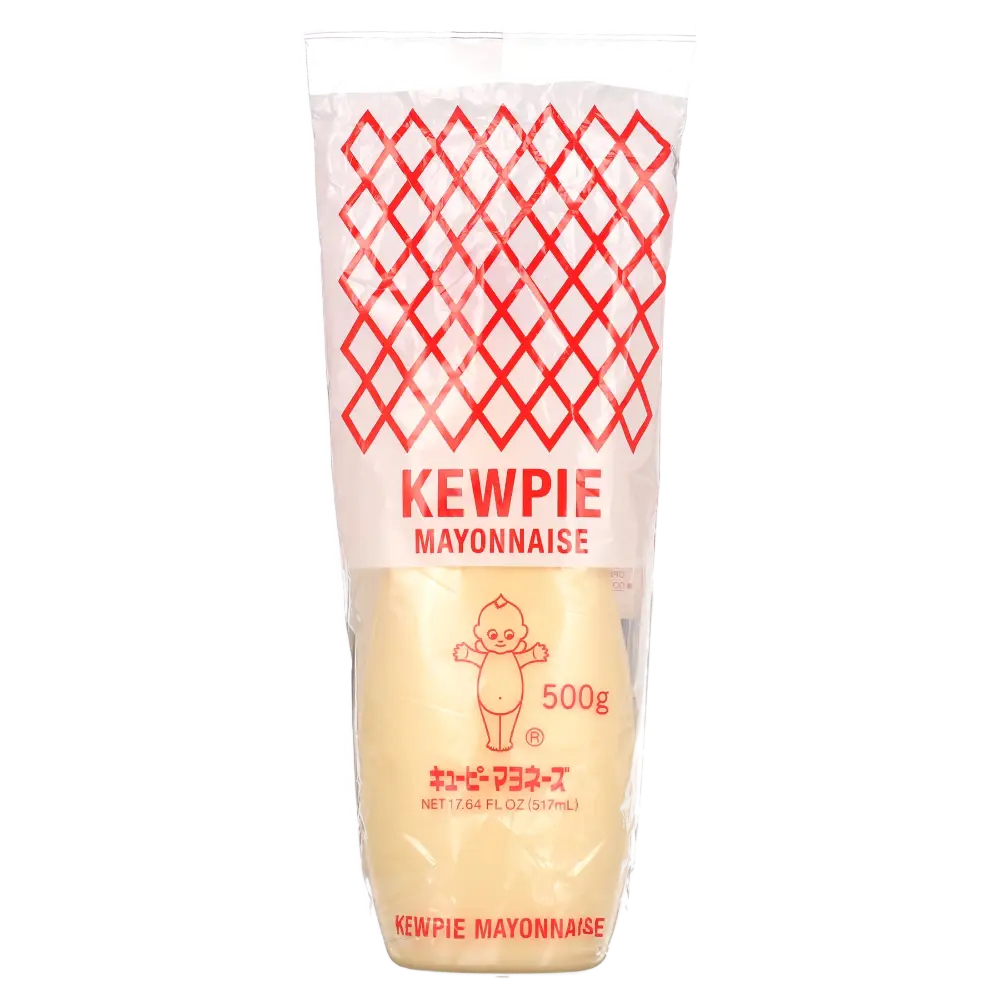
Not a sauce, per se, but we’re obsessed with it. Sometimes called Japanese “umami” style mayonnaise, Kewpie is rich and creamy texture is made from egg yolks, vinegar and MSG.
Miso

Miso is a thick, salty Japanese paste made by fermenting soy-beans with salt and kōji. There are three basic types: Shiro-miso, (white miso), Akamiso (red miso) and Awasemiso (mixed miso). We mostly use the mildest white miso.
Miso from grains like barley (mugi ortsubu in Japanese), wheat (tsubu), or rye (hadakamugi) are not gluten free. Miso from rice (kome or genmai), buckwheat (sobamugi), and millet (kibi) are gluten-free. Check the label to be sure. There are several brands for gluten free miso available.
Curry Pastes
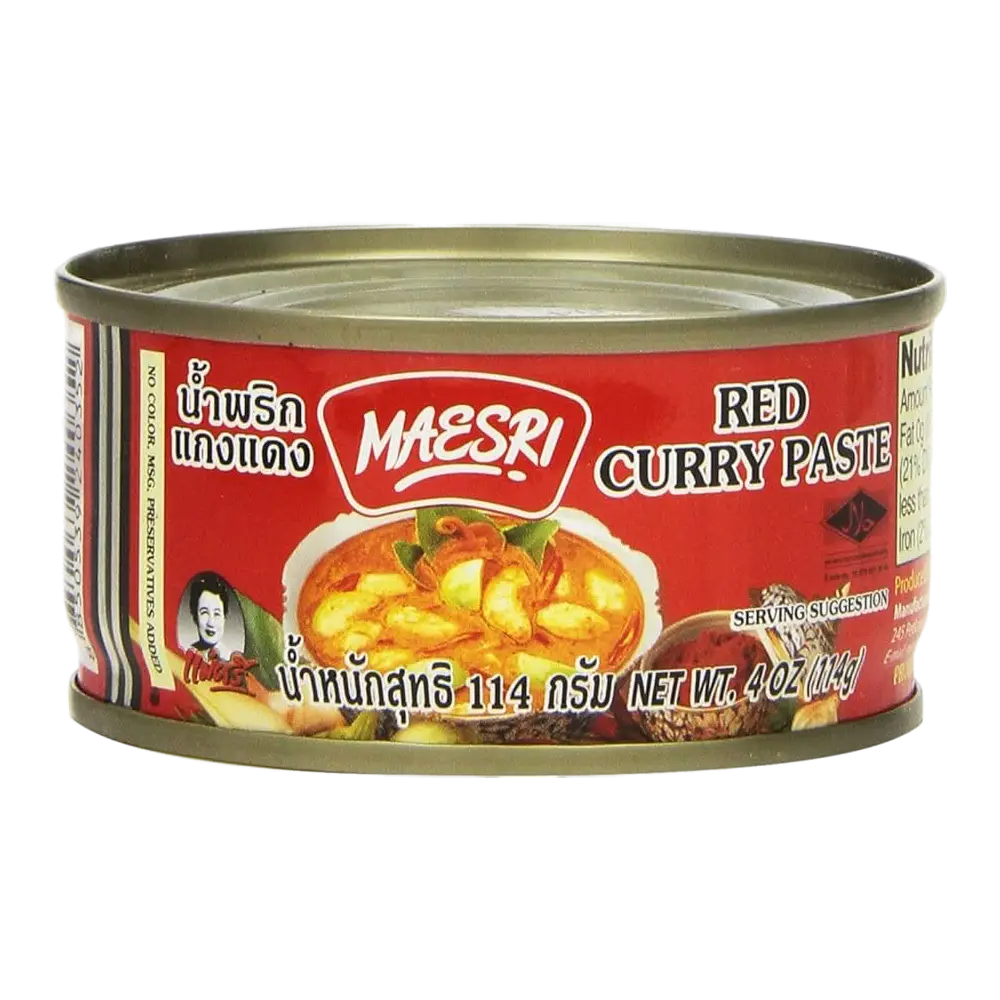
A great shortcut to flavor-packed Thai curries, this paste includes chilies, garlic, shallots, lemongrass, ginger, turmeric, shrimp paste, and various spices.
We use it on our Thai Coconut Curry Butternut Squash Soup.
Our favorite brand is Maesri, and we use red and Massaman most often though, green, yellow and Panang are also great.
Some brands are made with shrimp or fish sauce, but vegan, dairy and gluten free. brands, like Thai Kitchen are available.
COCONUT MILK
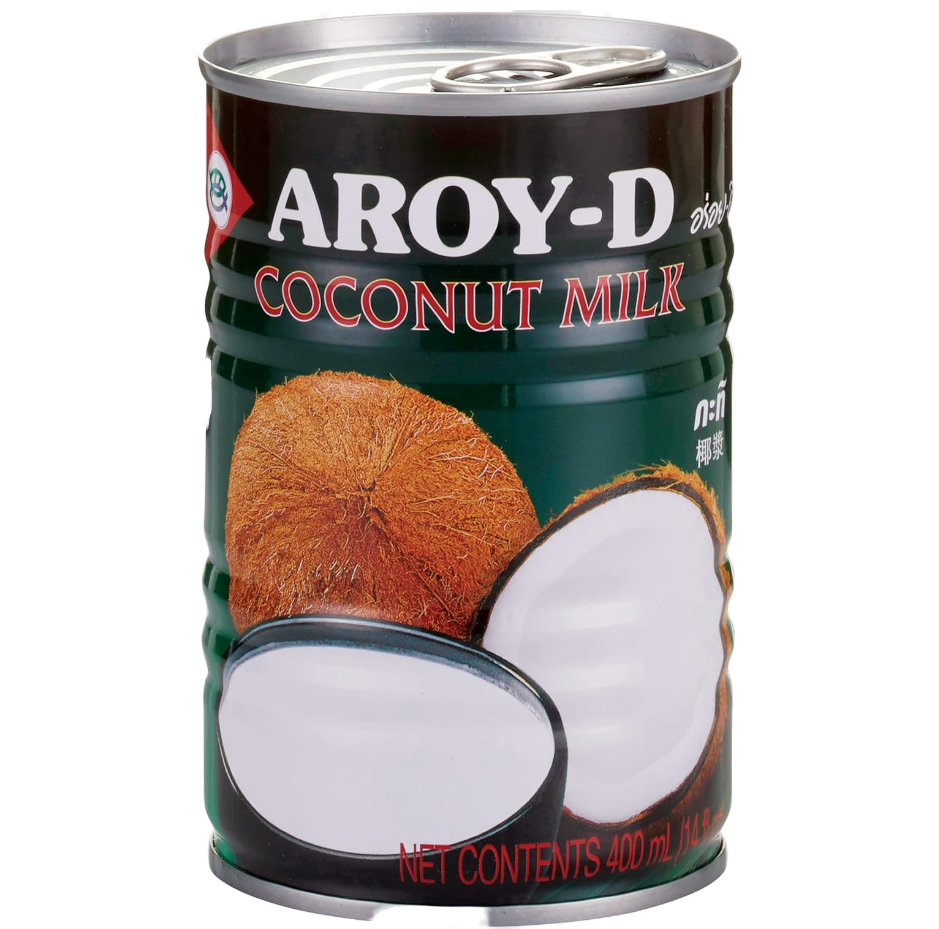
Coconut milk, coconut cream, and cream of coconut are all made from coconut, but they have different consistencies and uses.
Coconut milk is a liquid, similar to dairy milk, made by blending coconut meat with water. It’s used in curries, soups, smoothies, and as a dairy-free milk alternative.
COCONUT CREAM
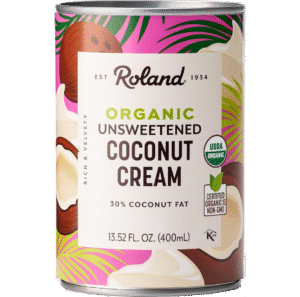
Coconut cream is thicker and richer than milk, with a higher fat content. It’s the thick layer found at the top of a can of coconut milk (if you don’t mix the can before opening).
It can be purchased in its own and used to make dairy-free whipped cream or as a thickener in curries and soups.
CREAM OF COCONUT
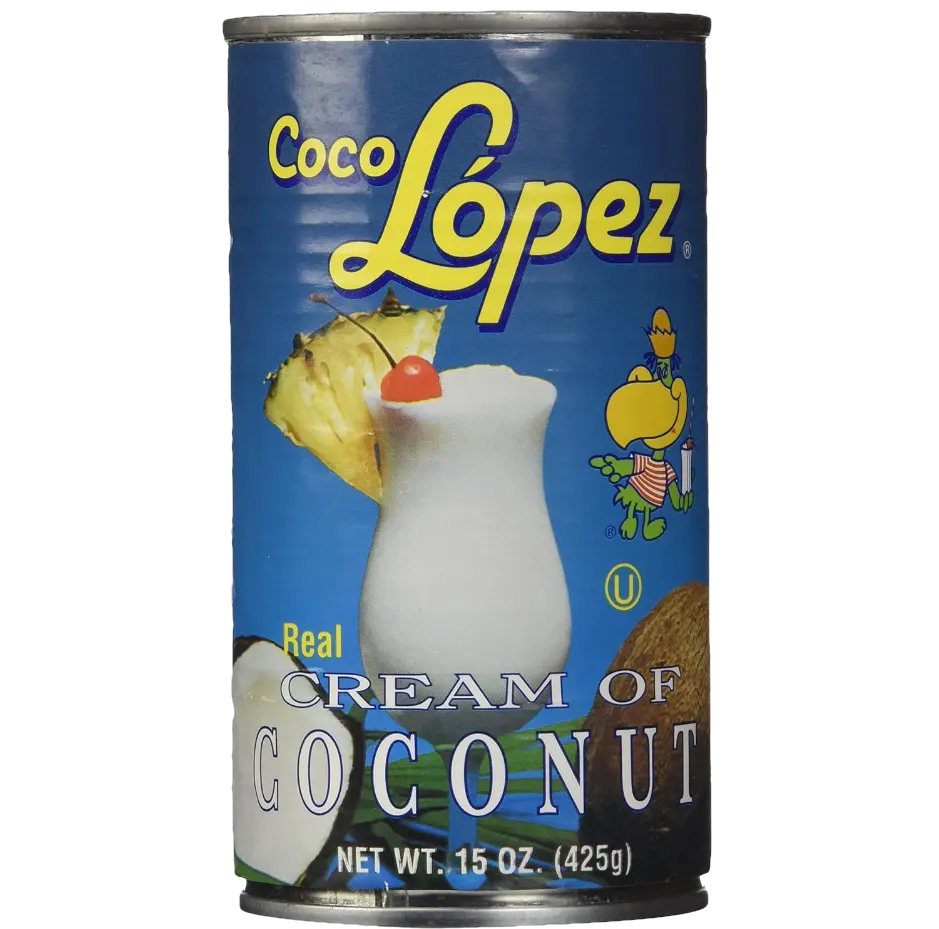
Cream of coconut is a sweetened, syrupy version of coconut cream, typically used in desserts and cocktails like piña coladas.
Don’t try to substitute it for coconut milk or cream.
(You can make your own cream of coconut using equal amounts of coconut cream and 2:1 simple syrup.)

cooking and seasoning Oils
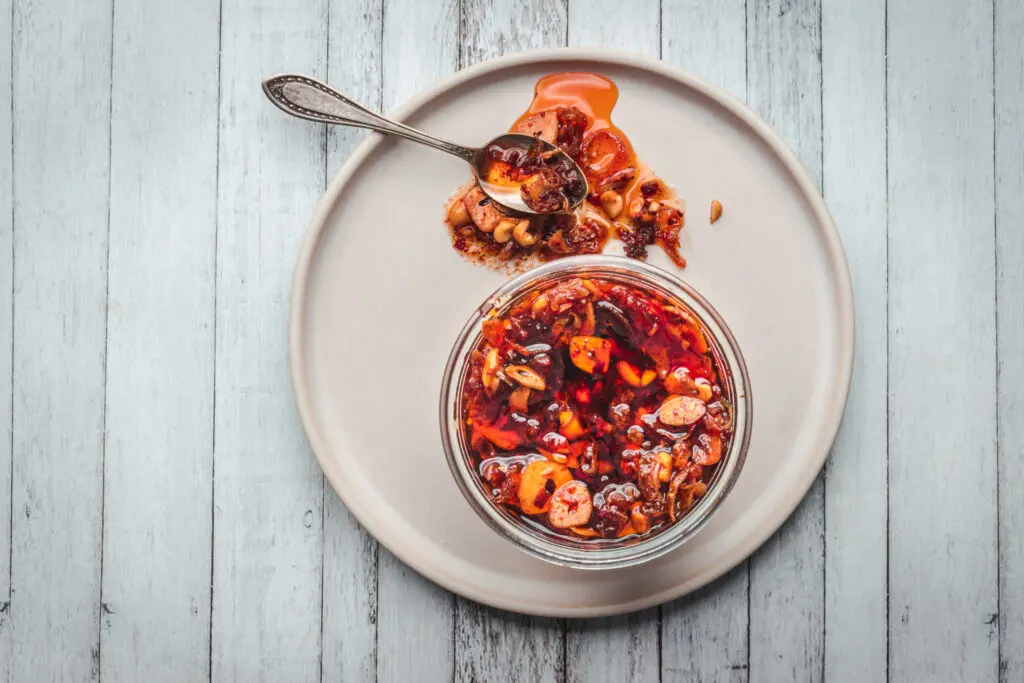
Toasted sesame oil is a key flavor is many dishes. It, and it’s spicy cousin are used almost entirely for seasoning, not cooking.
Toasted Sesame Oil

Deep amber, with a distinctive nutty flavor, toasted sesame oil is mostly used off the heat, as a finishing oil.
A little goes a long way, but we add it to most of our Asian dishes, especially marinades and sauces. Make sure it’s ‘toasted’. It has a short shelf life, and we recommend keeping it in the fridge. Try it in this Quick Pickled Cucumber Salad.
HOT Chili Oil
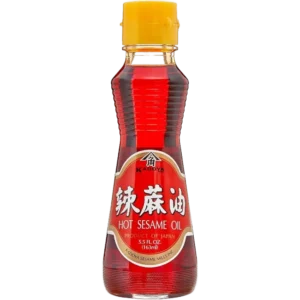
Hot chili oil is toasted sesame oil that has been infused with hot red chili peppers. Just a few drops adds heat to stir-fries, soups, sauces, dressings, marinades, vegetables, beans, and noodle dishes.
Peanut oil
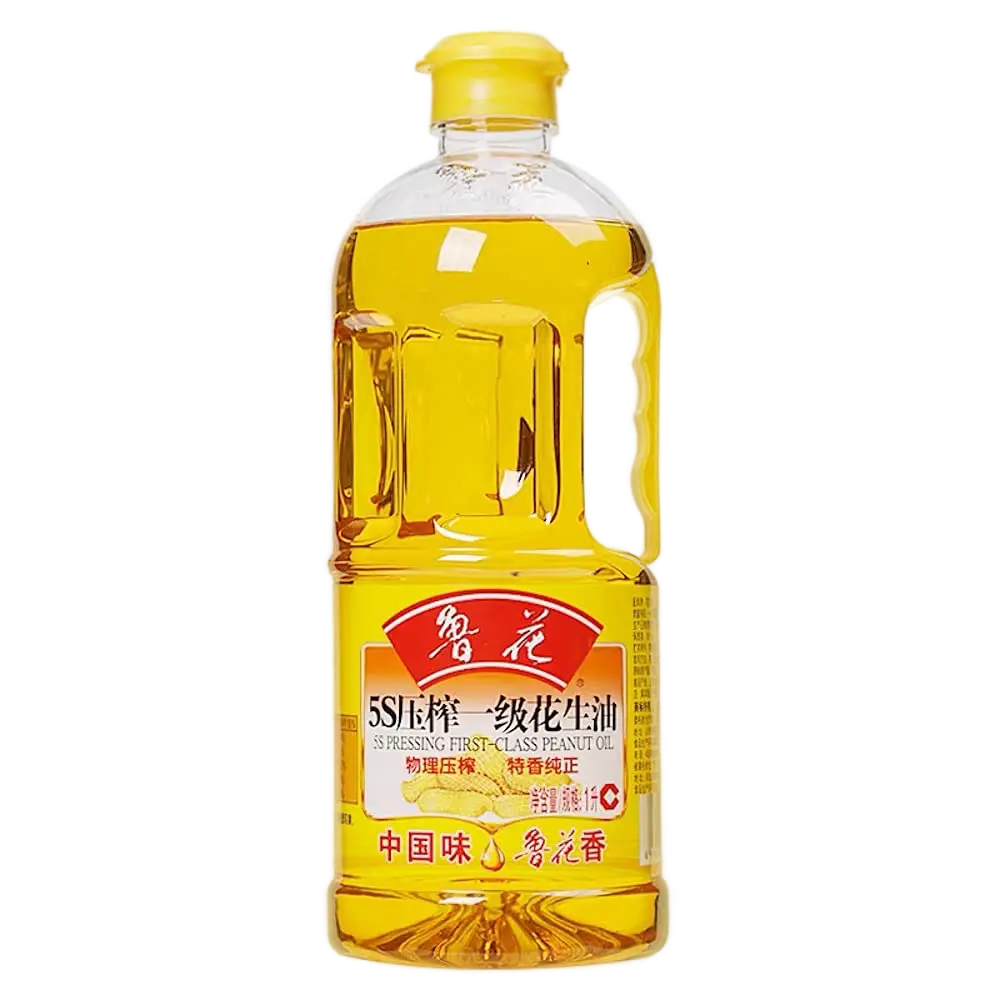
Refined peanut oil has a high smoke point, making it a good choice for frying and other high-heat cooking methods. Whenever you see a recipe call for “neutral oil”, you can use peanut oil.
Many Asian markets will carry large bottles for lower prices than many grocery stores.

SPICY Sauces and pastes
Want to add a spicy kick to marinades, sauces or just a topping to a finished dish? These are the spicy ingredients we use most often.
Chili Garlic
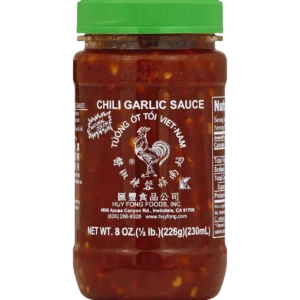
Garlicky, tangy and spicy, there is always a bar of Chili Garlic Paste in our fridge. Typically made with red chilies, garlic, salt, vinegar, and sugar.
We use it in stir fries, marinades, and in Spicy Mayo.
Sambal Oelek
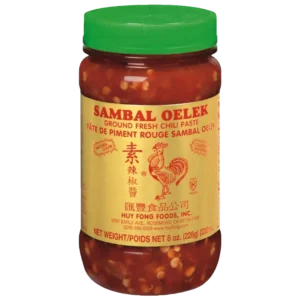
Sambal Oelek is an Indonesian paste very similar to Chili Garlic, but without the garlic. Often with a slightly fresher, spicier flavor.
Gochujang
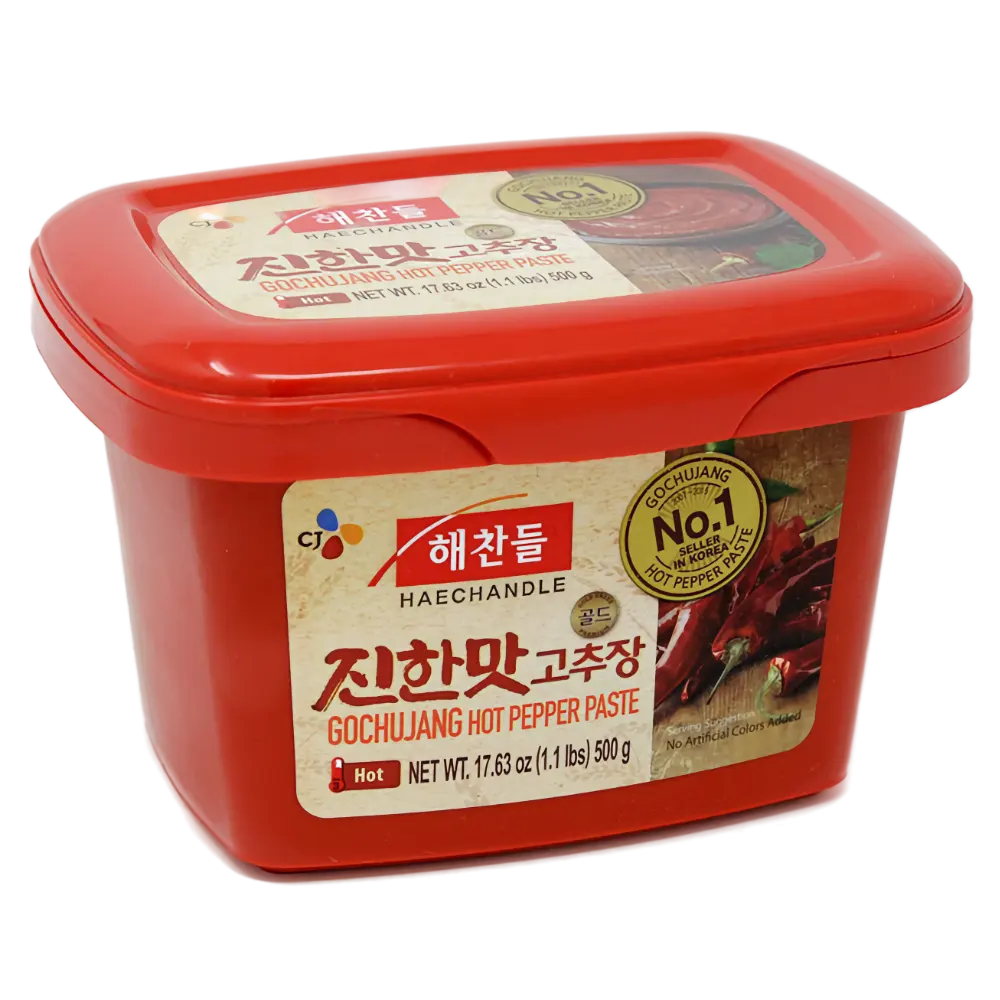
Gochujang is a Korean fermented red pepper paste that is spicy, salty, earthy and sweet. The heat can vary widely from brand to brand. It’s a great way to add spice and umami to marinades and sauces.
Chili Crisp
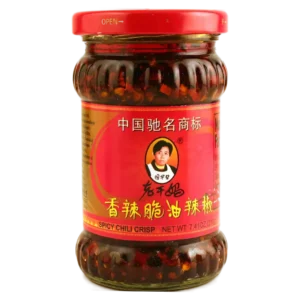
Chinese Chili crisp is a type of spicy chili oil that features crispy, flavorful bits of fried garlic, shallots, chili peppers, and other aromatics.
It’s great on noodles, rice, stir-fries, eggs, pizza and anything that can use a spicy kick. The most popular brand is Lao Gan Ma, but other popular brands include Fly By Jing, Momofuku, and Holy Tshili.
Sriracha

Sriracha is a type of hot sauce made from a paste of chili peppers, distilled vinegar, pickled garlic, sugar, and salt.
It was ubiquitous for years but Huy Fong Foods temporarily halted the production due to a severe shortage of chili peppers caused by a drought in Mexico that affected the quality of the peppers.
Wasabi

Wasabi is a spicy green Japanese paste mostly known for being served with sushi.
Real wasabi root is rare and expensive, and has a more delicate and nuanced flavor than the common version made from horseradish with green food coloring added.

kimchi
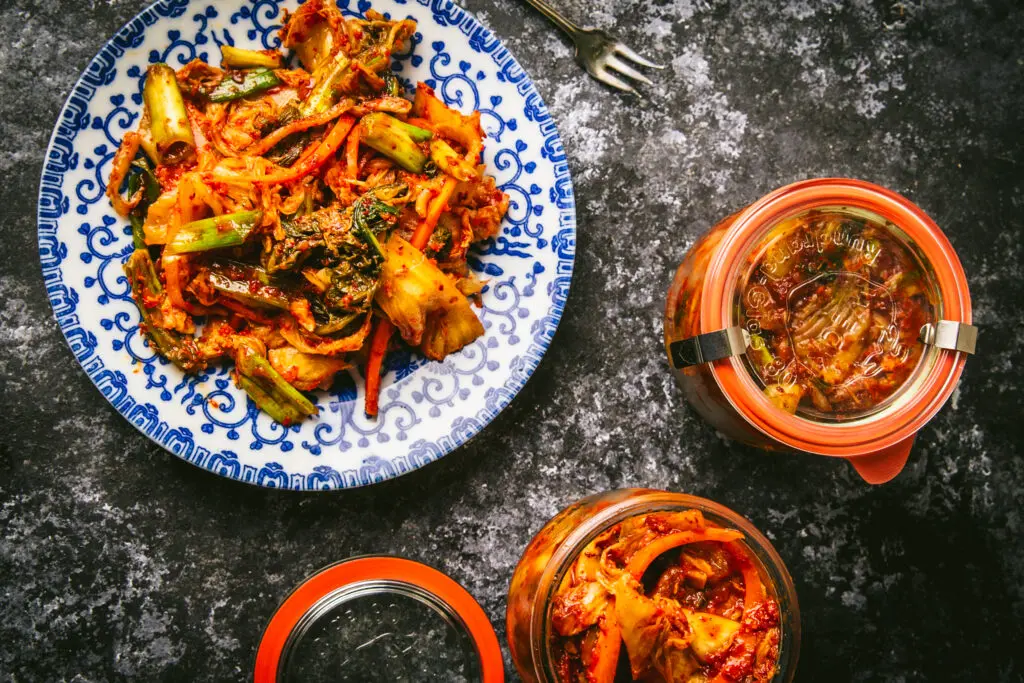
We make our own kimchi as often as we can, but between batches, store-bought is great. The cabbage version is the most well known, but if you can find other varieties, try them!
Note that not all brands of Kimchi are Vegetarian and Gluten Free.
Cabbage Kimchi
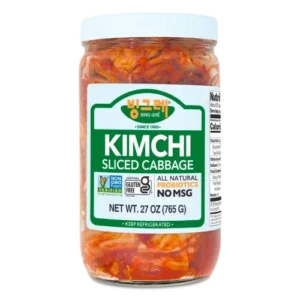
Kimchi is a traditional Korean side dish made with salted and fermented napa cabbage. Spicy, sour and addictively delicious, we always have a jar in our fridge.
Save the brine and use it to make
Scallion Kimchi
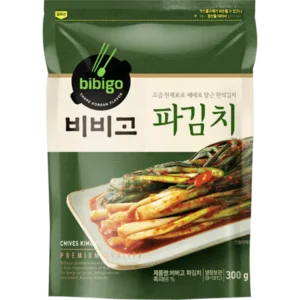
Called Pa-kimchi, this version is made with scallions (also called green onions) and is usually quite spicy and delicious.

Seaweed

There a many kinds of seaweeds that are used in different ways. We use nori to make sushi rolls, and kombu is a great flavor booster for broth. The one we use most often is Korean Gim (or Kim), which is a crisp, salty, roasted version of nori, perfect with rice and kimchi.
Nori
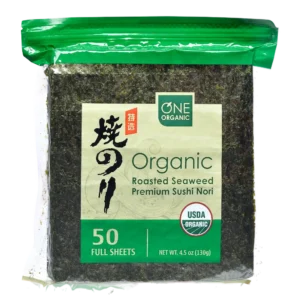
Japanese Nori sheets are thin, dried sheets of seaweed commonly used for wrapping sushi and onigiri (rice balls).
Strips or small sheets of nori are used as garnish for noodles, soups, and rice dishes.
Gim
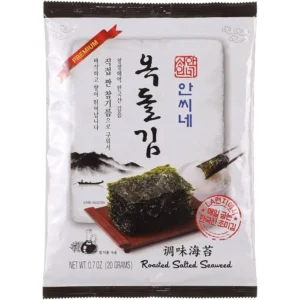
Gim is a Korean roasted seaweed similar to the Japanese nori but it is seasoned with sesame oil and salt. It’s great for snacking or accompanying a stir-fry or pan-fried salmon, and is our favorite type of seaweed.
Kombu

Kombu is the main ingredient of dashi, the soup stock that is the foundation of many Japanese dishes, like miso soup and ramen. It can be eaten on its own, softened in hot water and served with mirin (Japanese rice wine) and soy sauce.

RICE
Rice is a versatile grain, used in countless dishes from main courses to desserts, and is a fundamental element of Asian cuisine. There are dozens of varieties and we love to experiment, but we always have long grain white and at least one brown rice in our pantry.
Long Grain White
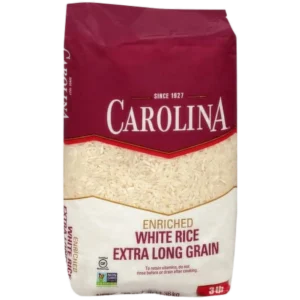
This pantry staple is perfect for many dishes. When cooked, long-grain white rice tends to be drier and fluffier than short-grain, with the grains remaining separate and distinct.
Jasmine Rice
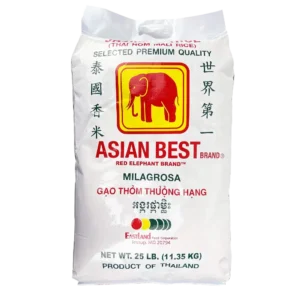
Native to Thailand, jasmine rice has distinctive floral aroma and slightly sticky, fluffy texture. It’s used in several Southeast Asian cuisines.
Sushi Rice
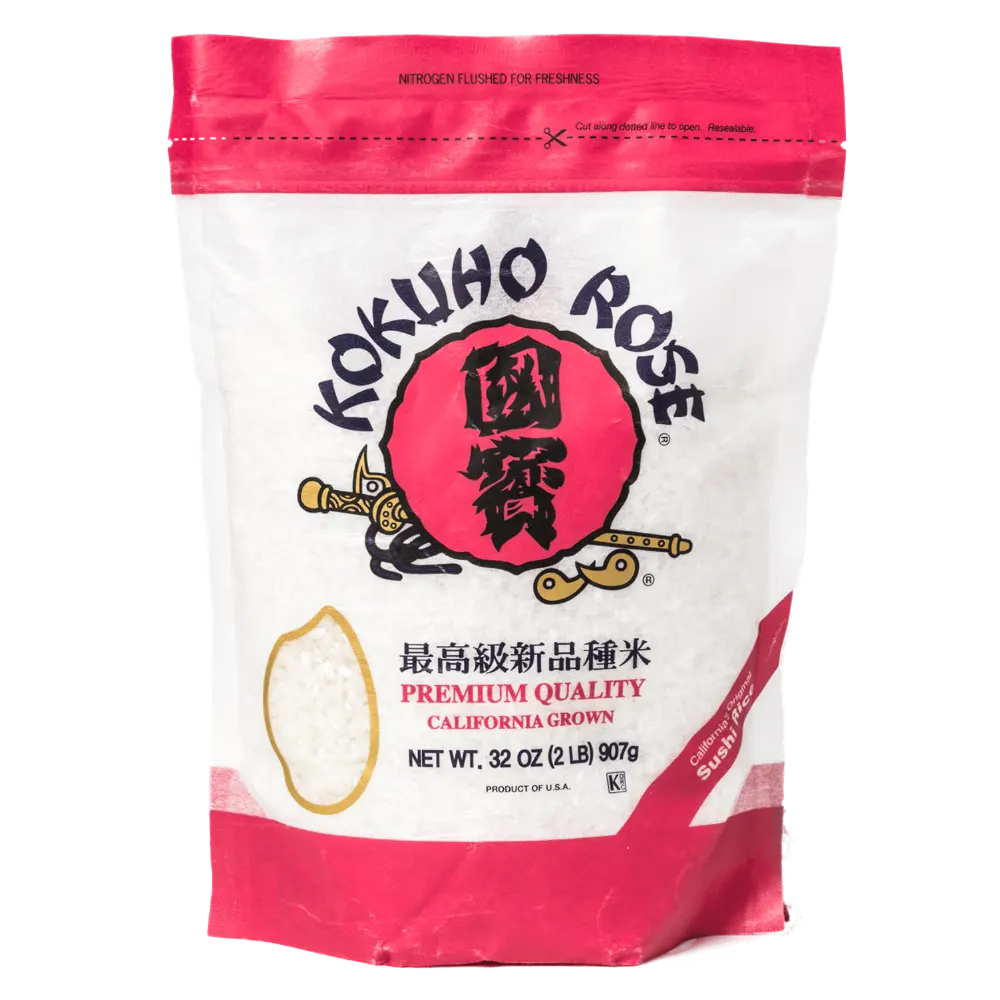
Short-grain Japanese rice, known for its high starch content and sticky texture, is ideal for sushi preparation.
Sometimes labeled as “glutinous rice” or “sticky rice”.
Brown Rice Varieties
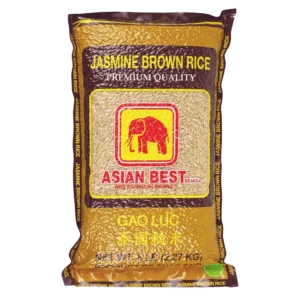
Brown rice is generally considered healthier because it’s a whole grain, retaining the bran and germ layers, which are rich in fiber, vitamins, and minerals.
We favor long grain Basmati and Jasmine varieties, which tend to be lighter and fluffier than short grain.
Black Rice

Also known as purple rice or forbidden rice, black rice is a beautiful dark grain with a nutty, chewy grain. It has a high nutritional value, particularly antioxidants.
Try it in this Black Rice Salad or Mushroom Soup.
GABA Rice
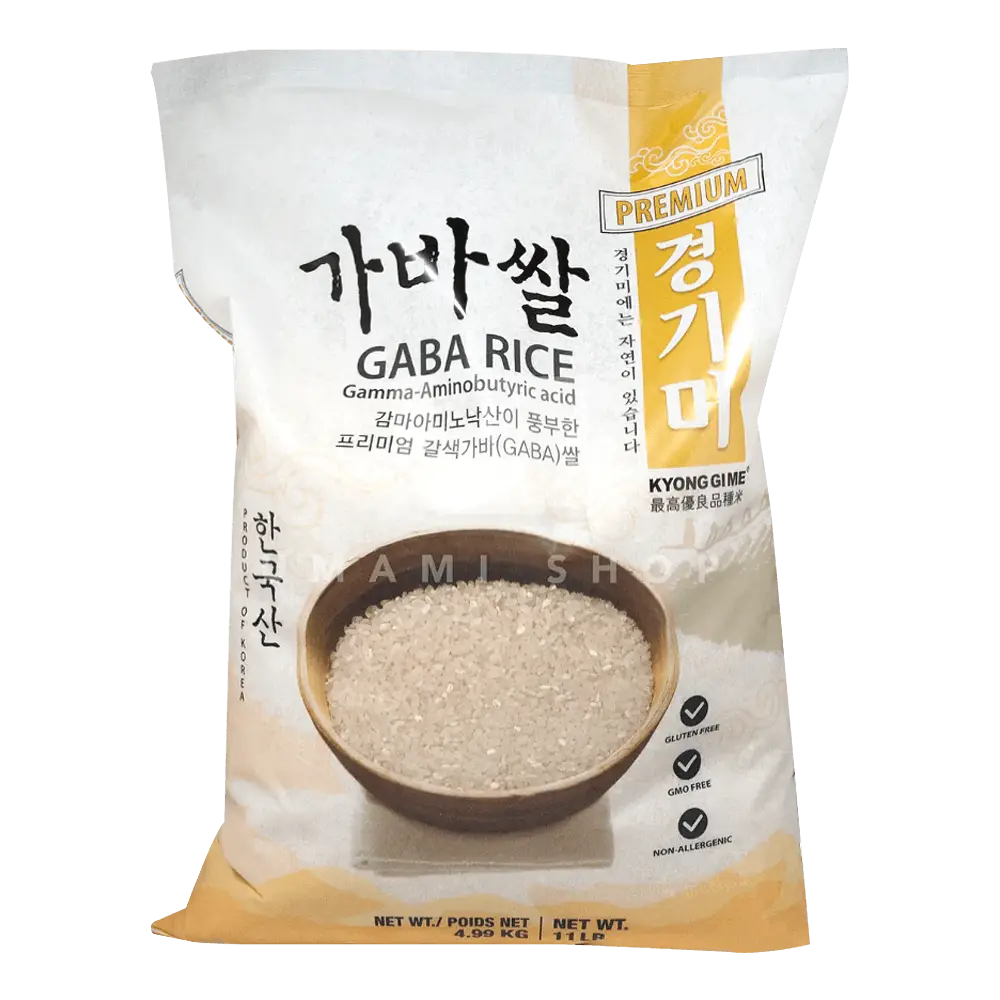
GABA rice is brown rice that has been allowed to germinate which changes the nutritional content of the rice, in particular increasing GABA content (gaba aminobutyric acid).
Some rice cookers have a GABA setting which is intended to germinate regular Asian brown rice (you don’t need to use GABA rice for this setting).

NOODLES

Where noodles actually originated is passionately disputed, but what’s clear is that many cultures consider noodles a staple. In Asia, noodles aren’t just food, but symbols of of longevity and good health, often eaten during special occasions like birthdays and the Lunar New Year.
Ramen
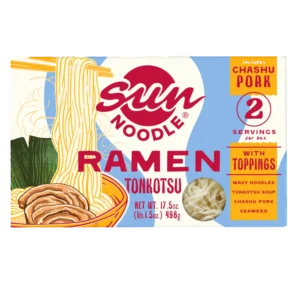
Ramen is an extremely broad term, encompassing the 6 for $1 sodium bombs many of us survived on in college, all the way to Michelin star restaurant versions with hand pulled wheat noodles and broth as complex as any French sauce.
We like to stock up on the middle ground variety. Sun Noodle makes delicious ramen kits with fresh noodles in many varieties.
Rice Noodles
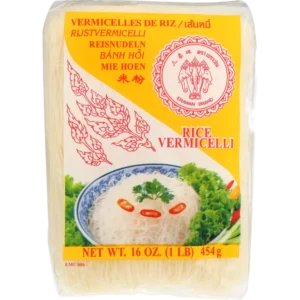
Made with rice flour and sometimes tapioca or corn starch, rice noodles are common in the cuisines of China and Southeast Asia.
They are available in various shapes, thicknesses and textures as well as fresh, frozen, or dried. We use thin vermicelli noodles in our Vietnamese Grilled Pork Chops (Thit Heo Nuong Xa) with Rice Noodles
Usually gluten free, but check the label.
Udon
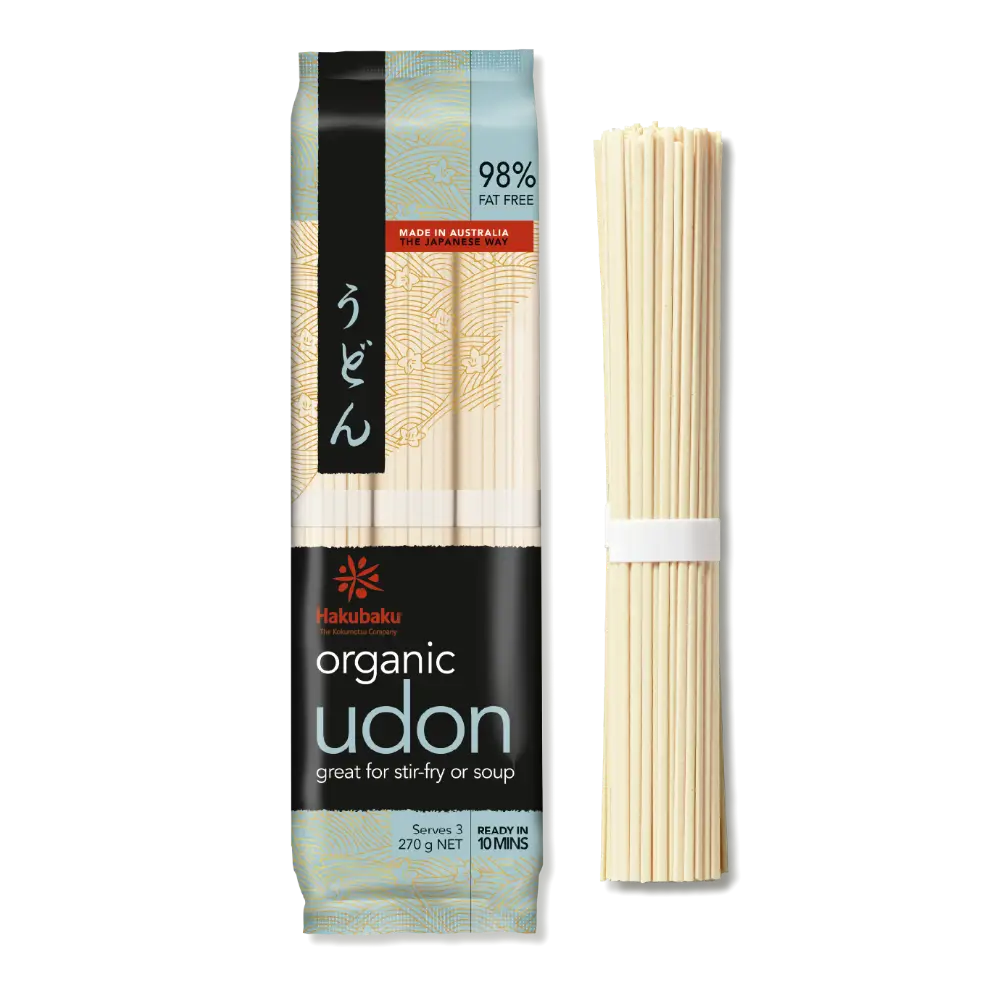
A staple in Japanese cuisine, udon noodles are traditionally made from wheat flour, water, and salt.
They can be served in hot broth (kake udon), cold with a dipping sauce (zaru udon), as part of a hot pot (nabe), and in stir-fries (yakiudon).
SOBA
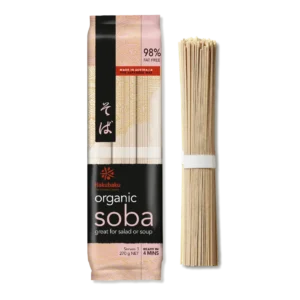
Soba noodles are thin, flat, Japanese noodles made from buckwheat flour. They have a nutty flavor and chewy texture, can be eaten hot or cold. They are often eaten with savory dipping sauces or in soups.
Traditional soba are made from a combination of buckwheat and wheat flour you can definitely find soba noodles that are 100% gluten free. Just check the labels.
FRESH Rice Noodles

Unlike dried rice noodles, fresh rice noodles are already soft and usually won’t require being soaked in water. They come in different widths, and even in sheets that can be cut to the desired size. We like wide noodles for dishes like Pad See Ew.
If the noodles are stuck together, gently pull them apart with your fingers or microwave them for a few seconds to loosen them.
Lo mein NOODLES
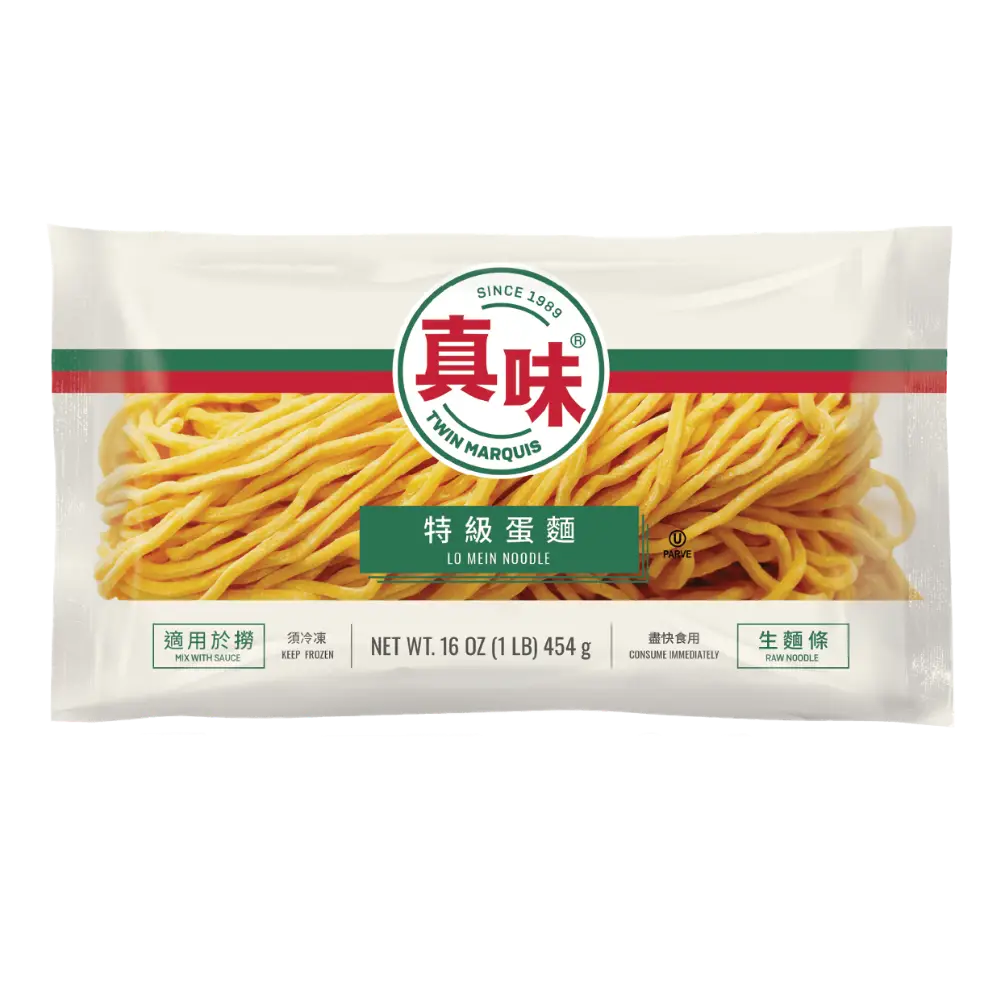
Lo mein are Chinese wheat flour noodles, often made with eggs. They are mostly stir-fried because they don’t get mushy and absorb sauces well. They do require pre-boiling before being stir fried.
You’ll usually find them in the refrigerated section. We use them in our Stir Fried Lo Mein Noodles with Pork and Vegetables.

STARCHES
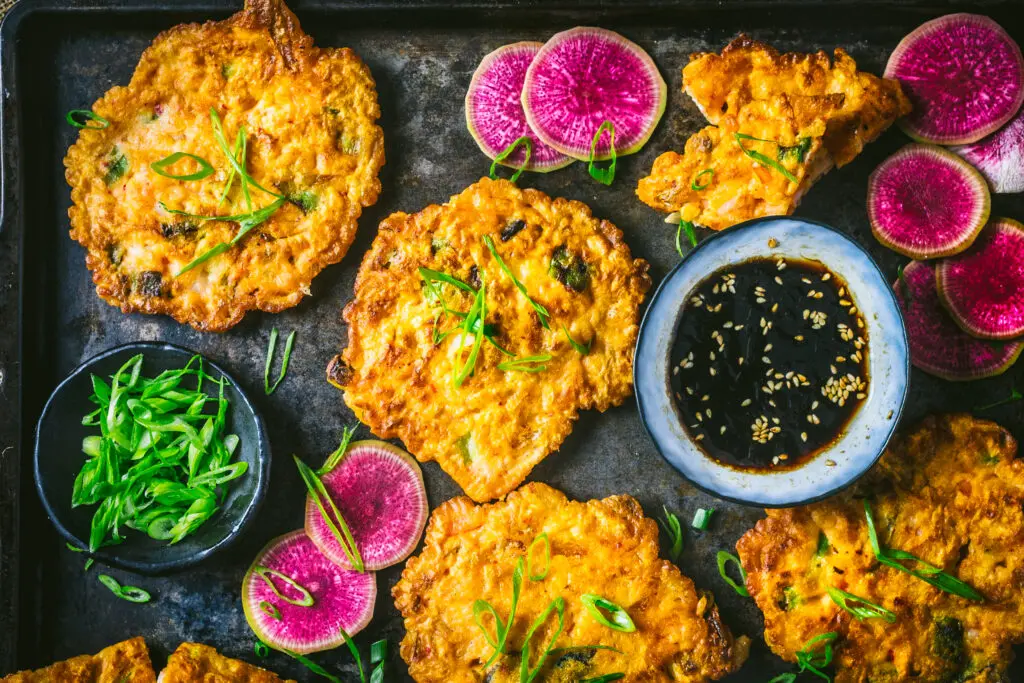
Starches, like cornstarch, rice flour, and potato starch, are crucial in Asian cuisine for thickening sauces, creating crispy coatings, and achieving velvety textures in proteins.
Cornstarch
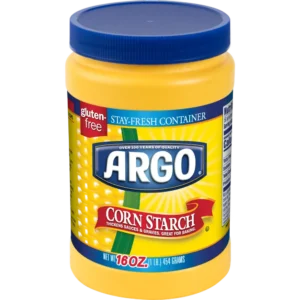
A common ingredient in many kitchens, cornstarch is used to thicken sauces, particularly in Chinese cuisine. It also is used to tenderize meat through a technique called “velveting”
It’s excellent when used as a dredge or in a batter for frying, helping to create a very crisp coating.
Gluten Free
Rice Flour
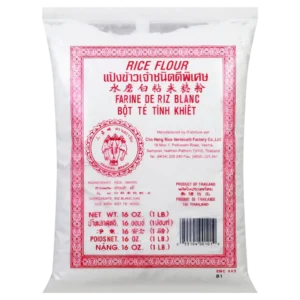
Made from ground medium or long-grain rice, rice flour can be used as a gluten-free alternative to wheat flour in various dishes. It creates a thin, light and crispy crust when used in batters.
This is what you want to use for kimchi pancakes. Don’t confuse it with glutinous rice flour, which has a very different texture.
Gluten Free
Glutinous Rice Flour
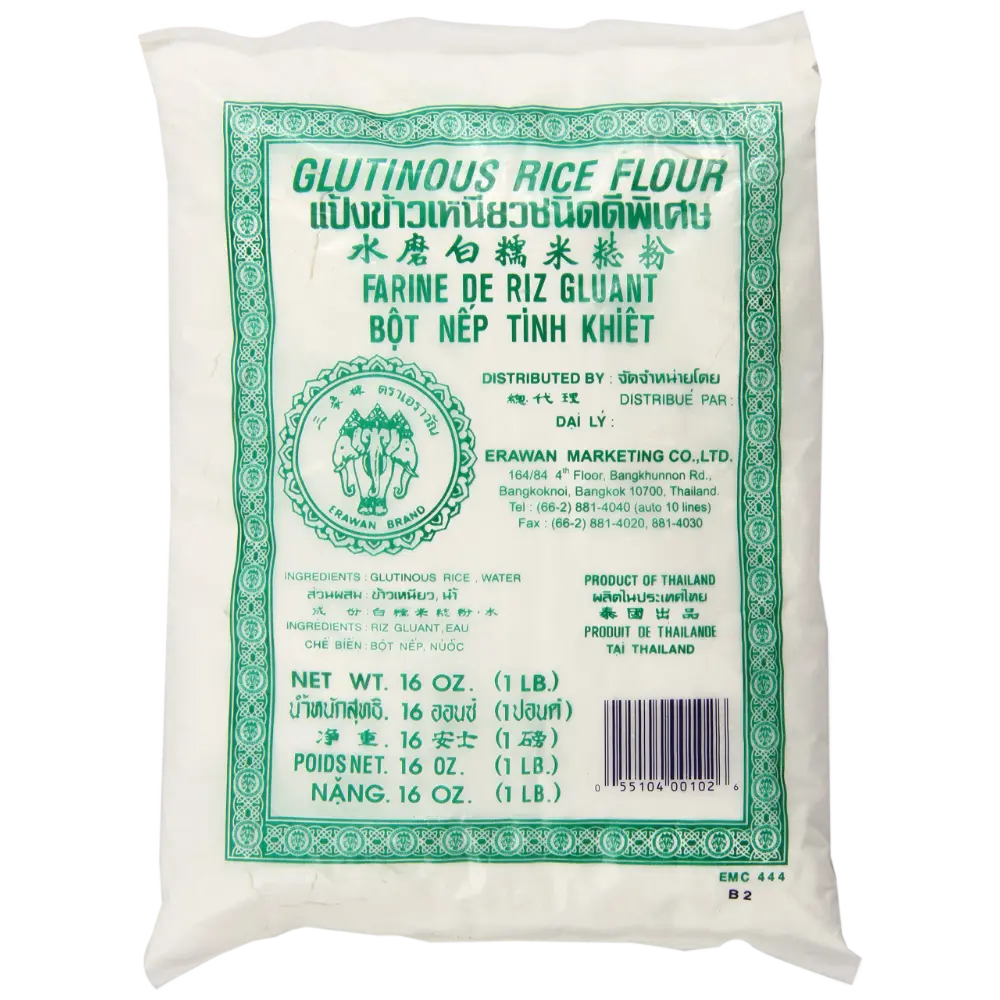
Not to be confused with regular rice flour, glutinous rice flour is made from glutinous or sticky rice.
Also known as sweet rice flour or mochiko, it has a sticky and chewy texture. It’s used in many dishes, including sweets like mochi.
Gluten Free
Potato Starch

Potato starch is great as a dredge for frying or in batters, and will result in slightly crispier results than with cornstarch.
It can also be used as a thickener in sauces, and results in a clearer, more translucent sauce.
Gluten Free
Sweet Potato Starch
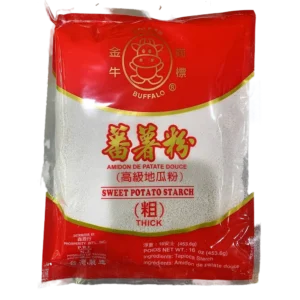
Sweet potato starch has a coarser texture than potato starch or cornstarch. It can be used to coat but will result in a thicker, more opaque, gel-like consistency.
Gluten Free
Tapioca Starch
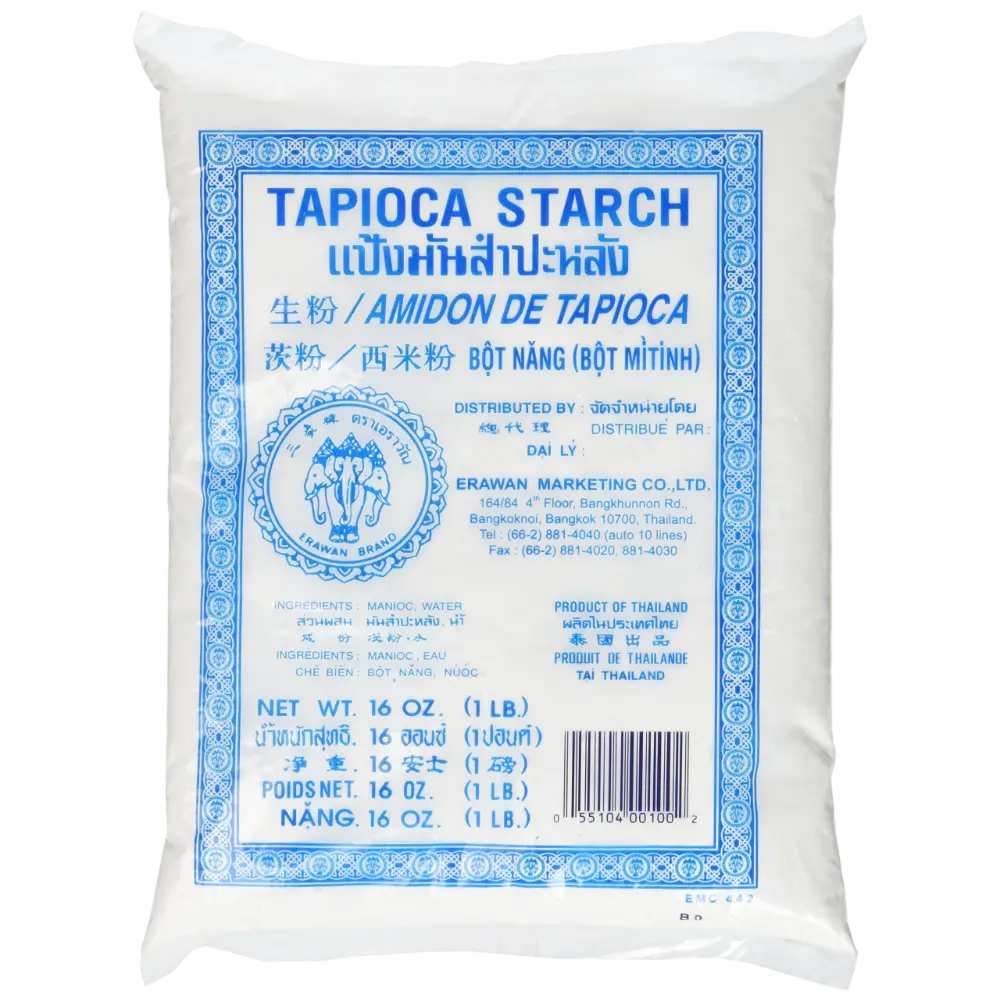
Tapioca starch (also known as tapioca flour) is used in both sweet and savory dishes, as a thickener, a binder, and a key component in chewy desserts and noodles. It has a soft and silky texture.
Gluten Free

AROMATICS
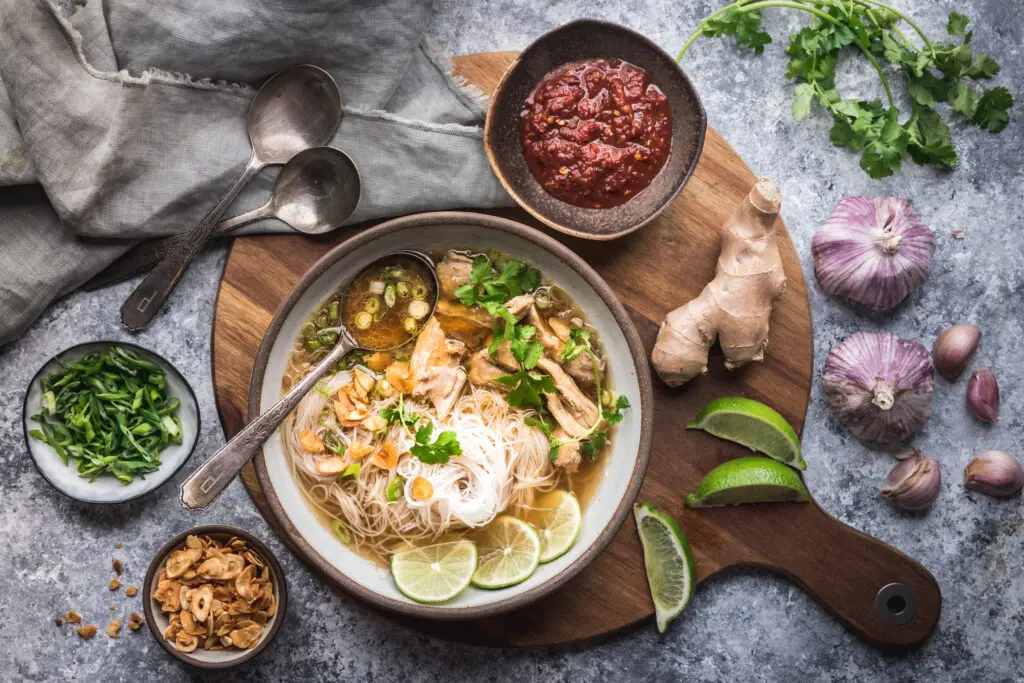
Aromatics, including garlic, ginger and scallions make up the backbone of Asian cooking. Below is a list of the aromatics we cook with the most often.
Garlic
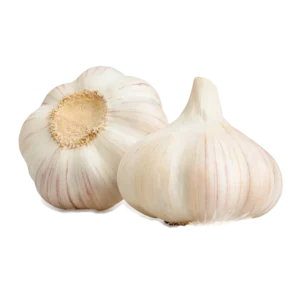
The backbone to all the most delicious dishes, regardless of cuisine. We always have garlic in our pantry. We grow our own, but when we run out, our Asian market is a great place to buy quality bulbs.
If any recipe suggests you cook with a single clove of garlic (unless grating raw into a dip), scoff audibly and add at least two more cloves.
Ginger
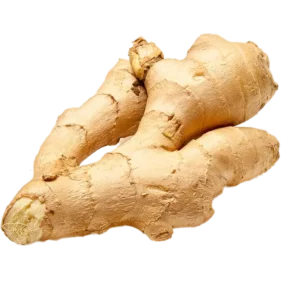
Ginger is a common ingredient in many Asian cuisines. In Chinese cooking, Cantonese and Szechuan recipes use it in many sauces. In Japanese cuisine, it’s often pickled or used in broth.
We like to store ours in the freezer, and grate it as needed.
Scallions

Scallions, also known as green onions, have a fresh, mild onion flavor. The white part is often cooked, and the greens make a vibrant and delicious garnish.
Shallots
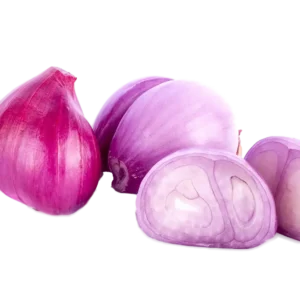
Shallots are milder than onions, and we love using them in stir fries and sauces.
Our favorite use for shallots is to fry them until shatteringly crisp and use them as a garnish. They can be made at home or purchased in jars.
Lemongrass
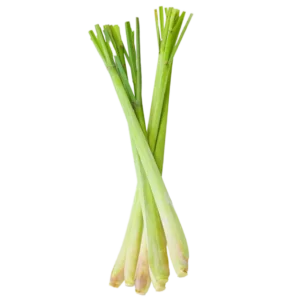
Lemongrass is a key herb in Southeast Asian cuisine, particularly Thai and Vietnamese. It has a distinct lemony, citrusy, and slightly herbal flavor.
Use the tender, center part of the lower stalks in marinades and broths.
Chinese Chives
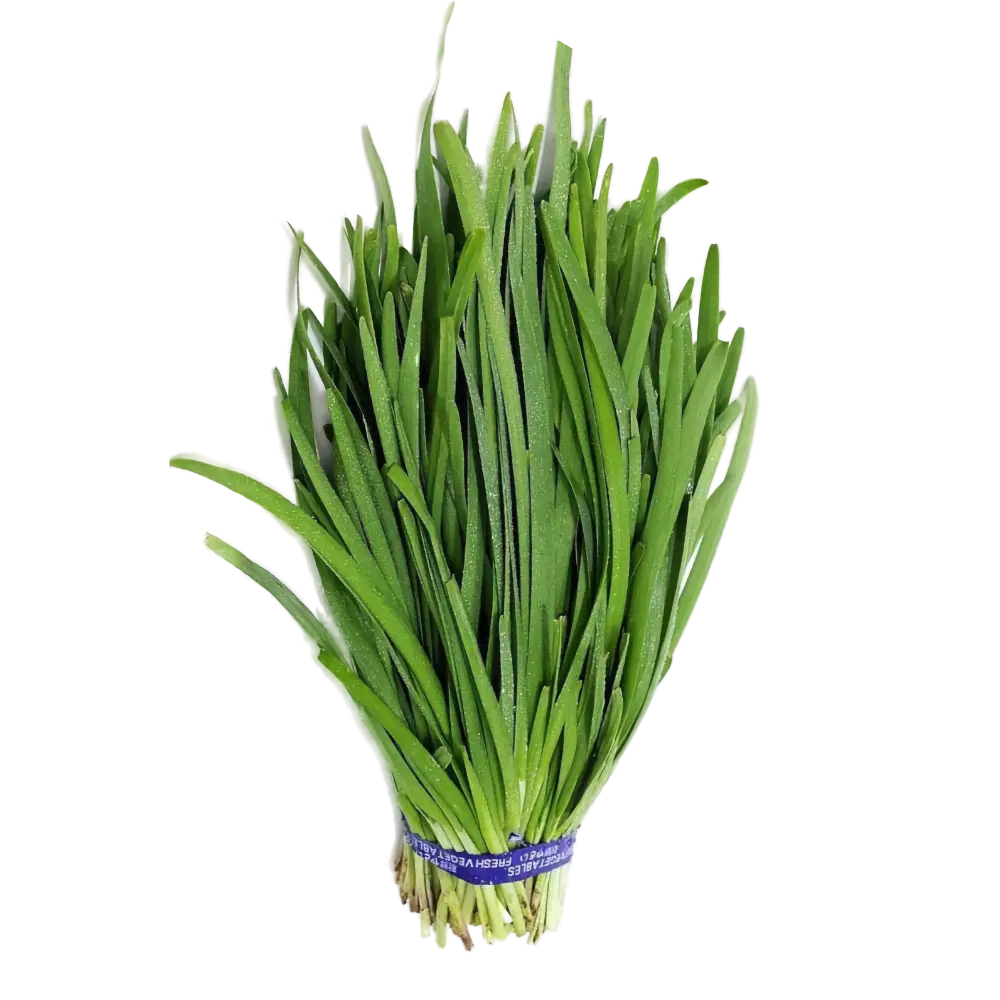
Also called garlic chives, they are recognizable by their flat narrow leaves and bright green color.
They are absolutely delicious in stir fries, dumplings and sauces. They are mild enough that we almost use them as a vegetable, more than a seasoning.

Spices, Seeds and powders
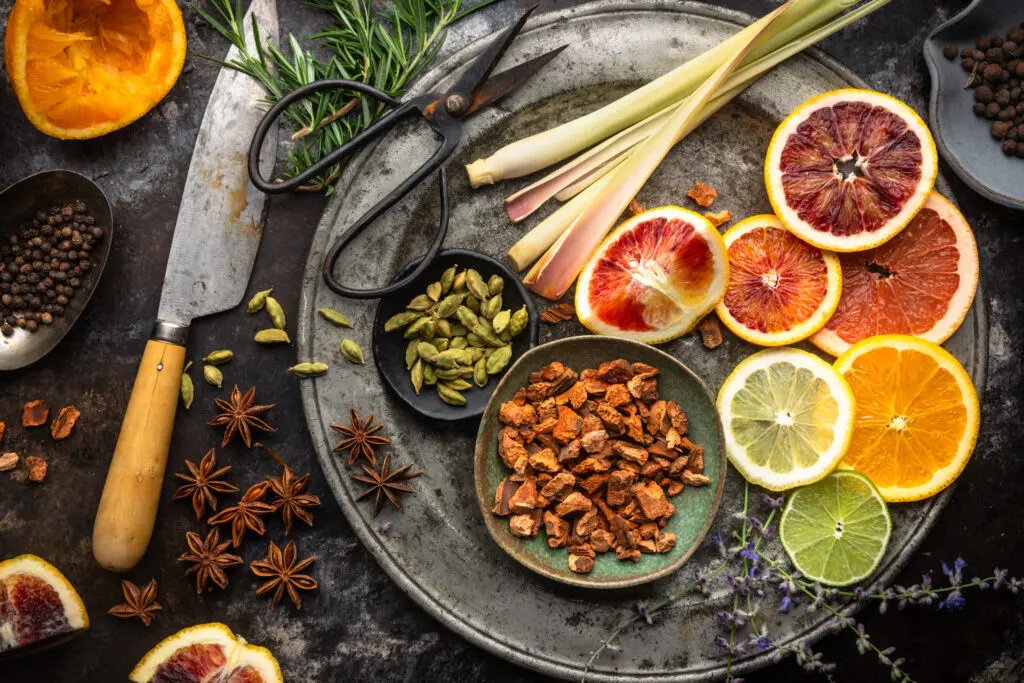
Sesame Seeds
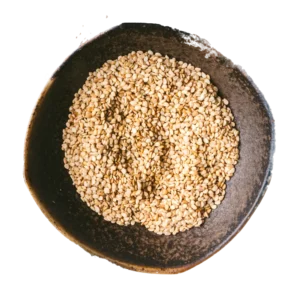
We usually keep both white and black sesame seeds on hand. Besides being a great garnish, they work as a crisp, nutty coating to pan-fried salmon and shrimp toast.
The oils are volatile to heat so we store them in the refrigerator.
Szechuan peppercorns
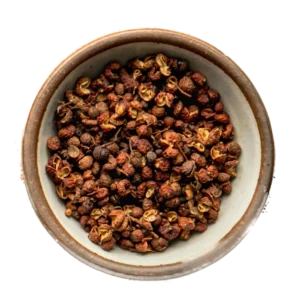
Also called Sichuan pepper. Known for their unique numbing and tingling sensation on the tongue, this spice has a light citrusy aroma.
They actually aren’t peppercorns. They are the dried berries of a prickly ash tree, not related to black pepper.
Star Anise
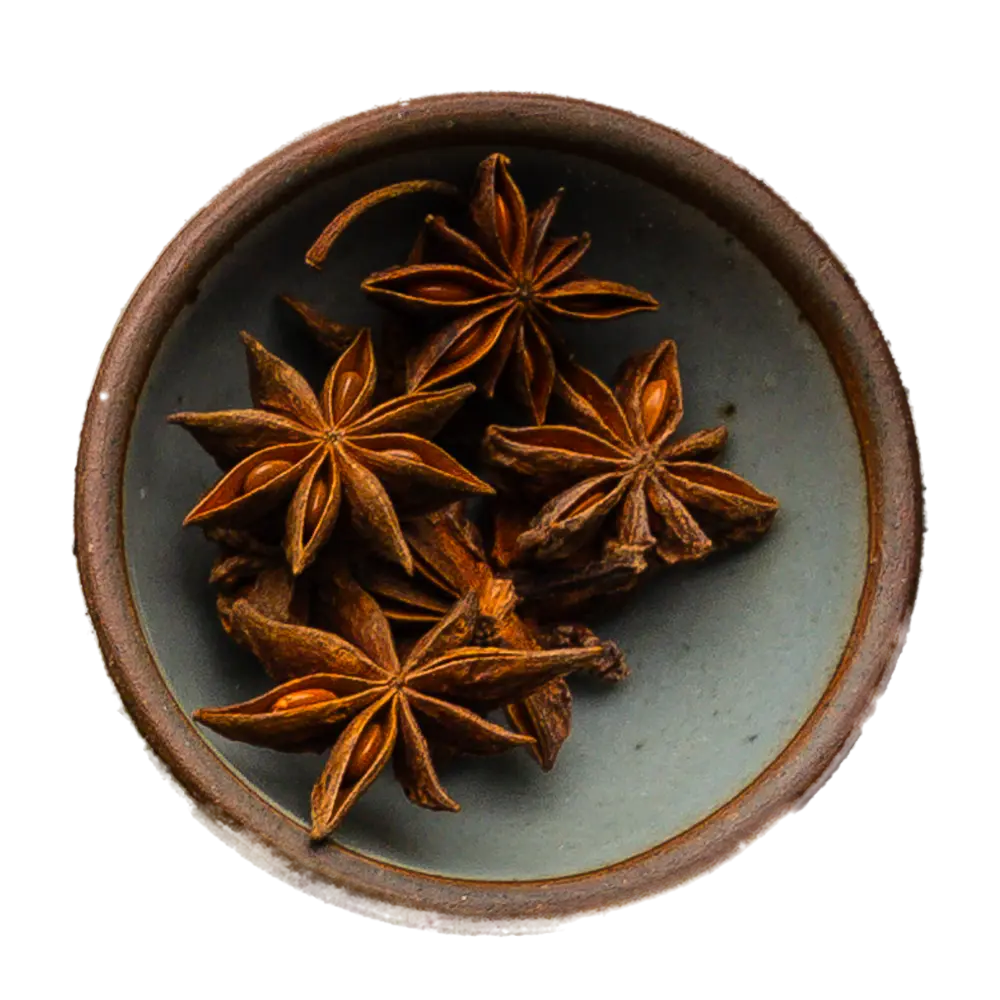
Star anise is one of our favorite ways to add depth to braises and stews. It has a sweet, licorice-like flavor with subtle hints of clove and cinnamon. And it’s so beautiful!
Five Spice
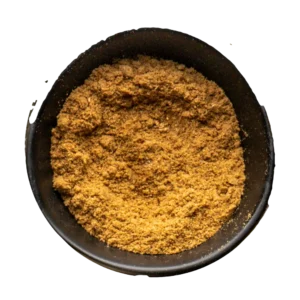
A popular Chinese seasoning blend typically composed of ground star anise, cloves, Chinese cinnamon, Sichuan peppercorns, and fennel seeds, known for its warm, aromatic, and slightly sweet flavor.
Like curry powder blends, no two versions are exactly alike.
Gochugaru
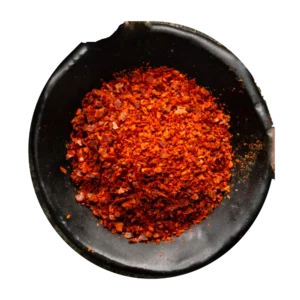
A beautiful, fiery red, this ground chili is used in many Korean dishes like kimchi, bulgogi, and tteokbokki. It can be found as coarse flakes (our preference) or fine powder.
Slightly sweet, smoky, and fruity with varying levels of heat depending on the brand.
Dried Mushrooms

Dried mushrooms are a staple in Asian cuisine, particularly Chinese and Japanese cooking. They add a rich, umami flavor. We usually use shiitake but you can often find wood ear (black fungus), and oyster mushrooms. They need to be reconstituted in hot liquid in order to soften.


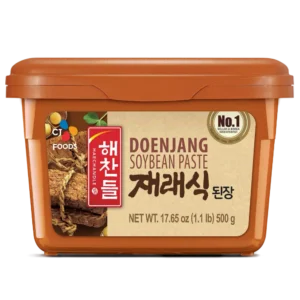
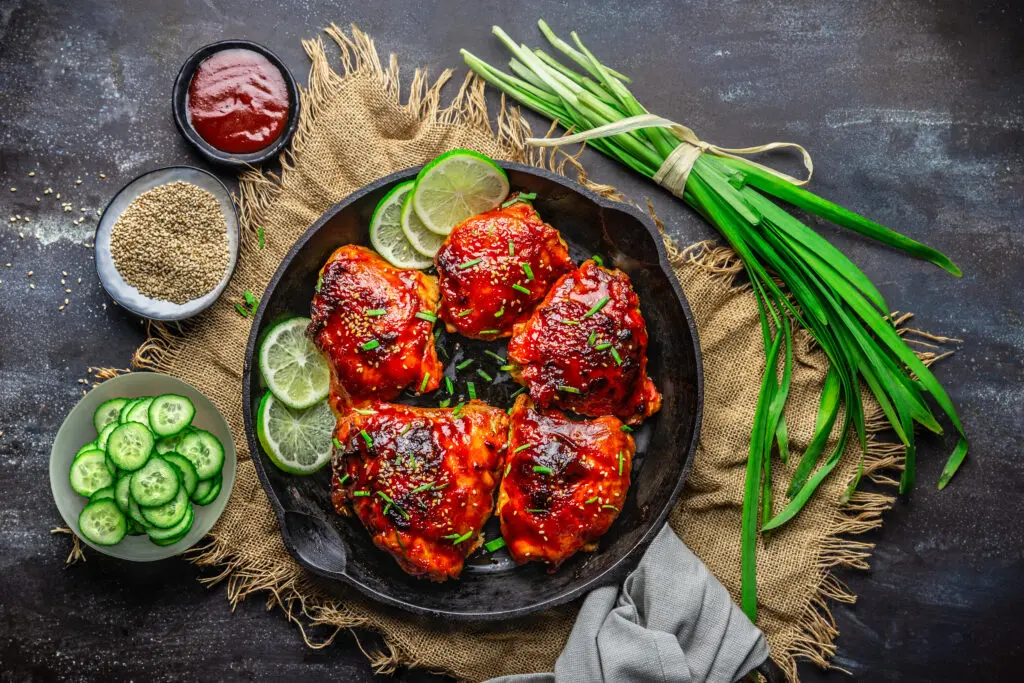
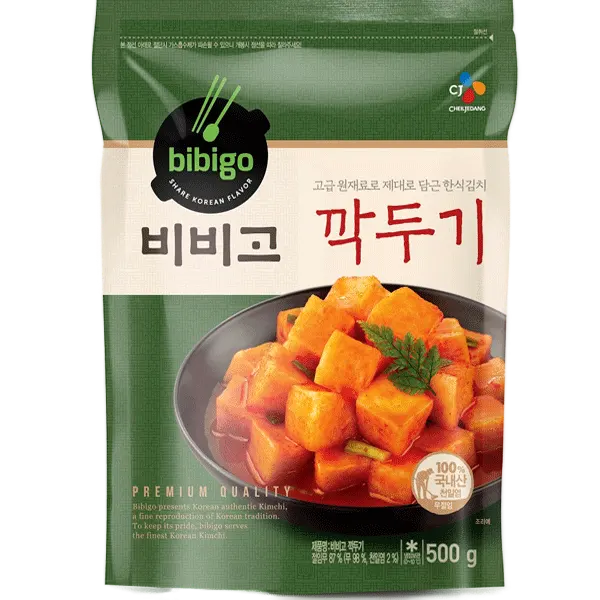
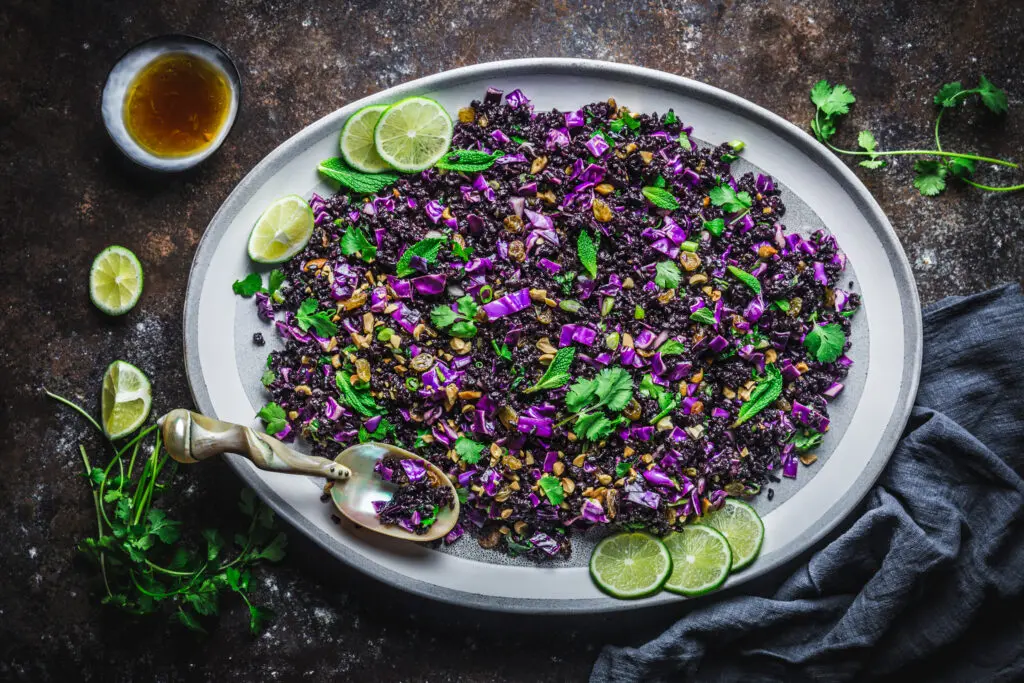
Just found your website, I love the look of some of the recipes. Just curious, how does fish sauce and oyster sauce differ from the delicious eel sauce that’s drizzled on top of my favorite sushi rolls?
Thanks, Eric!
In very basic terms, ‘fish sauce’ is a very salty, thin liquid that is added as a salt element to dishes. It’s intense so usually used sparingly, but it’s absolutely delicious.
‘Oyster sauce’ is a thick, slightly sweet sauce that is used in a lot of Chinese dishes. It’s not very fishy but has a slight oyster-y flavor. I love it in fried rice.
‘Eel sauce’ is a mixture of soy, sweet wine(mirin), sugar and other ingredients. The sugar is what gets so brown and delicious when it’s broiled on top of eel. Yum.
Awesome! Thanks for breaking it down!
This is a great list! Thank you for compiling it. Heading to the Asian markets this weekend 🙂
Awesome! So glad it was helpful!
I am so excited to learn that I already have all of the basics in my pantry and fridge! I never knew (until now) that sesame oil should be stored in the fridge – thank you for that. I keep fresh garlic and ginger on hand at all times. Though I must say, the ginger root in the photo here is a thousand times more plump and juicy-looking than any I have bought! I think I will try to grow my own from a store-bought rhizome.
Keeping basics on hand is one thing. Now I want to broaden my horizons in terms of putting these essentials to work in recipes. Thanks for a fantastic article!
Hi! This was super helpful to me since I’m (finally) moving on my own and have no clue how to make any other food than cook rice and some simple Japanese dishes, so now I can get the basics for scrolling down recipes (and not worry what some “fancy-sounding” ingredients are and where to get them). Thank you! 🙂
Nice selection but quite a big miss on Asian pantry basic : coconut milk!
You’re quite right and we hang our heads in shame. We haven’t updated this section in too long, and coconut milk is definitely something we plan to add. Thanks for the suggestion!
Thanks for the list. My husband and I (both retired) eat a lot of spicy noodle and rice dishes and like to experiment. Although we love most Asian food neither one of us like the taste if Sesame Oil. Is there a comparable substitute…we do have some good Asian markets close by.
Thank you for the detailed list and the definition for what to use it on!
So glad it’s helpful!
While I have most of the items on your list in my pantry currently, I REALLY liked all of the detail you included with each and every selection. This page is a keeper for certain! I am going to share it out to friends and family for sure. This was a lot of time and effort and you can tell.
Thanks so much, Laetha! I’m so glad you found it helpful 🙂